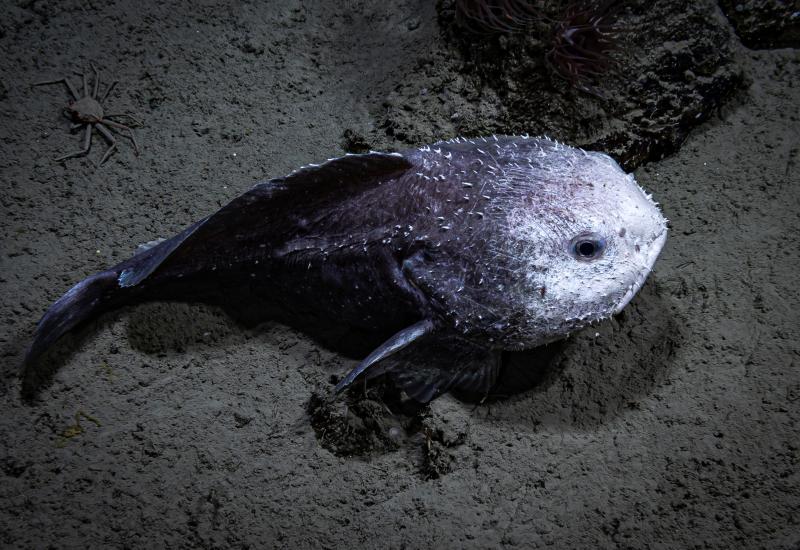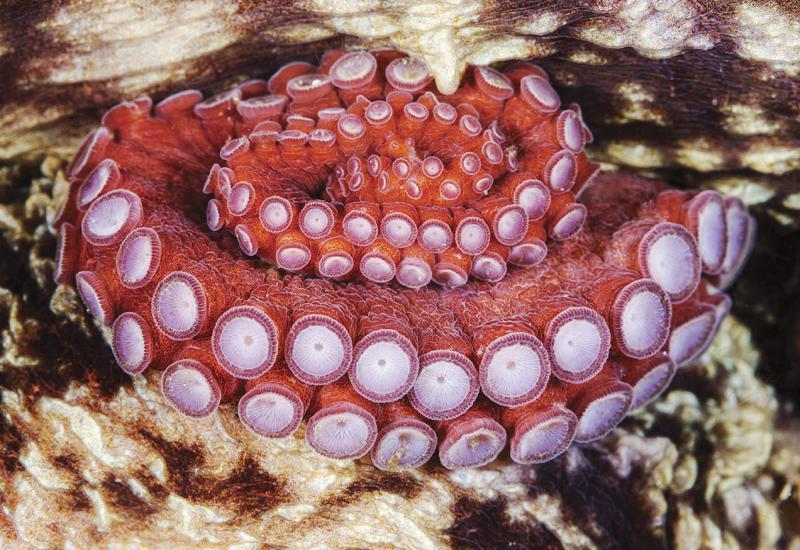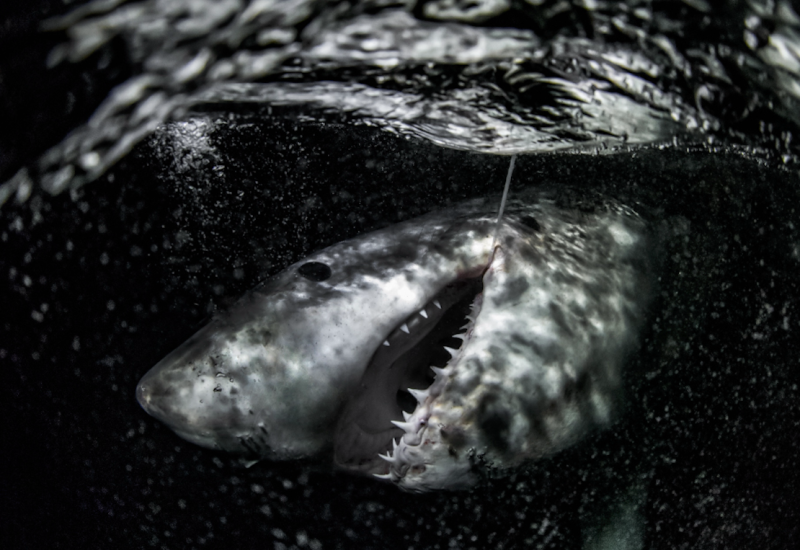40 Masters of Disguise from the 2014 Photo Contest
Take a digital dive into the bizarre depths of our blue planet and look through the eyes of our 2014 Scuba Diving Photo Contest contestants as they show off their skills in this amazing array of underwater photography capturing many of the rare and exotic sea creatures that dwell in disguise and survive as the ocean's greatest masters of deception. WARNING: You are not hallucinating, these are just very weird animals.
Find out more about these fascinating and bizarre creatures of the sea by checking out National Geographic or Discovery for more detailed fun facts, photographs, and videos on this incredible array of marine life.
Take a digital dive into the bizarre depths of our blue planet and look through the eyes of our 2014 Scuba Diving Photo Contest contestants as they show off their skills in this amazing array of underwater photography capturing many of the rare and exotic sea creatures that dwell in disguise and survive as the ocean's greatest masters of deception. WARNING: You are not hallucinating, these are just very weird animals.
Find out more about these fascinating and bizarre creatures of the sea by checking out National Geographic or Discovery for more detailed fun facts, photographs, and videos on this incredible array of marine life.
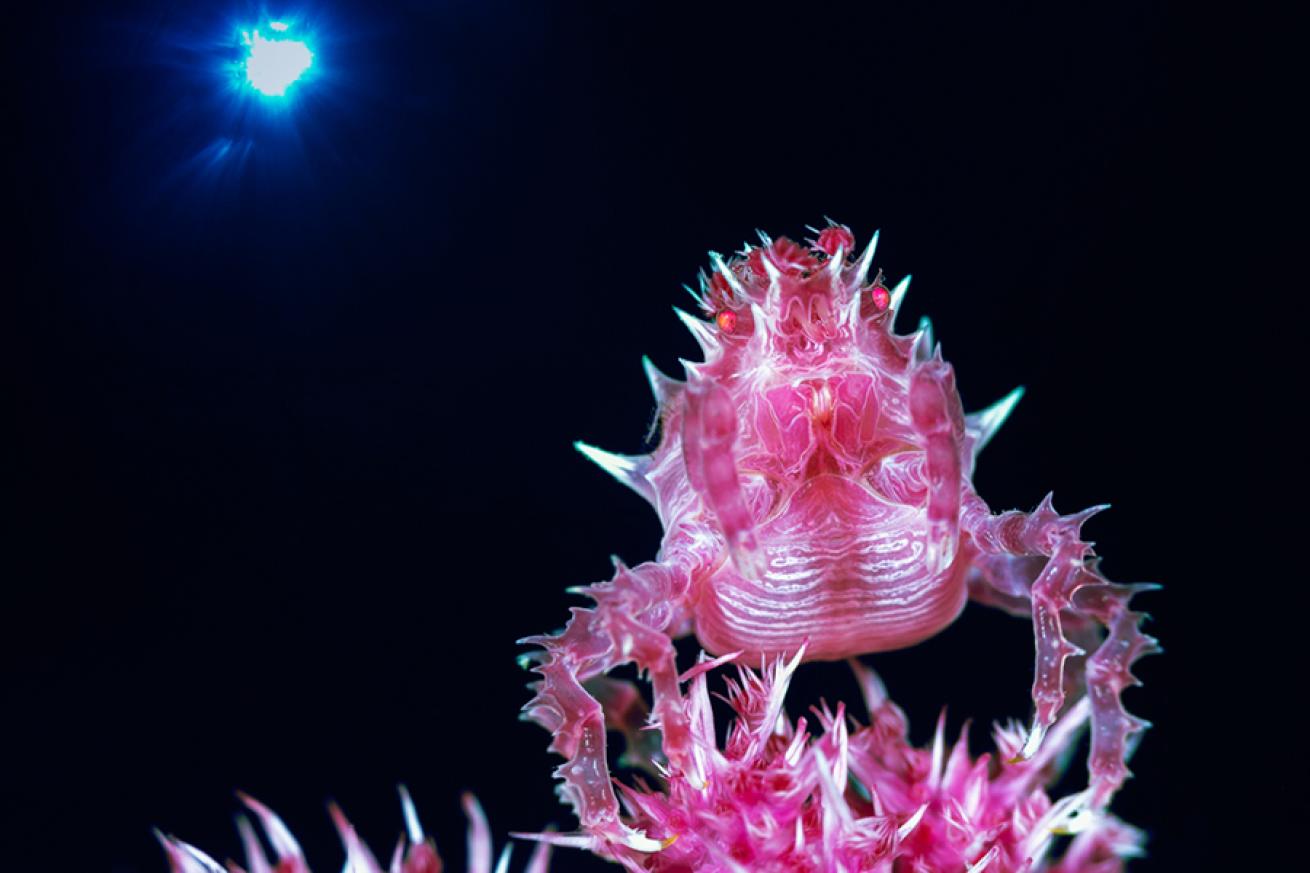
Marcello Di Francesco
This is Hoplophrys oatesi aka the candy crab. This unique species is definitely a master of disguise, mimicking its colorful soft coral habitat to better camouflage itself against predators.
Location: Maratua Island, Indonesia
Category: Macro
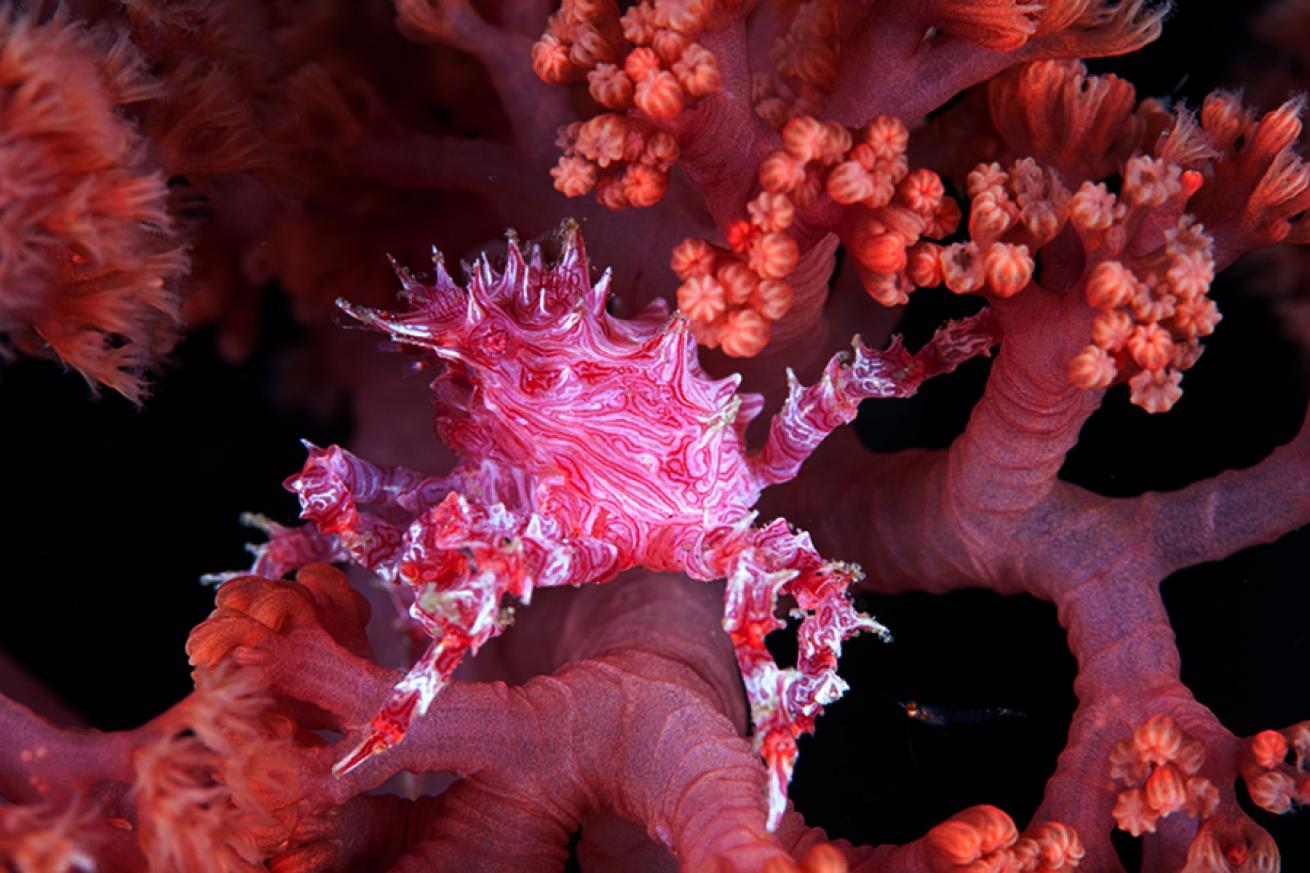
Nicholas Samaras
Growing on average to only 1.5-2 centimeters, these little guys continues to add further camouflage by attaching polyps from its surrounding coral habitat onto its carapace.
Location: East of Flores, Indonesia
Category: Macro
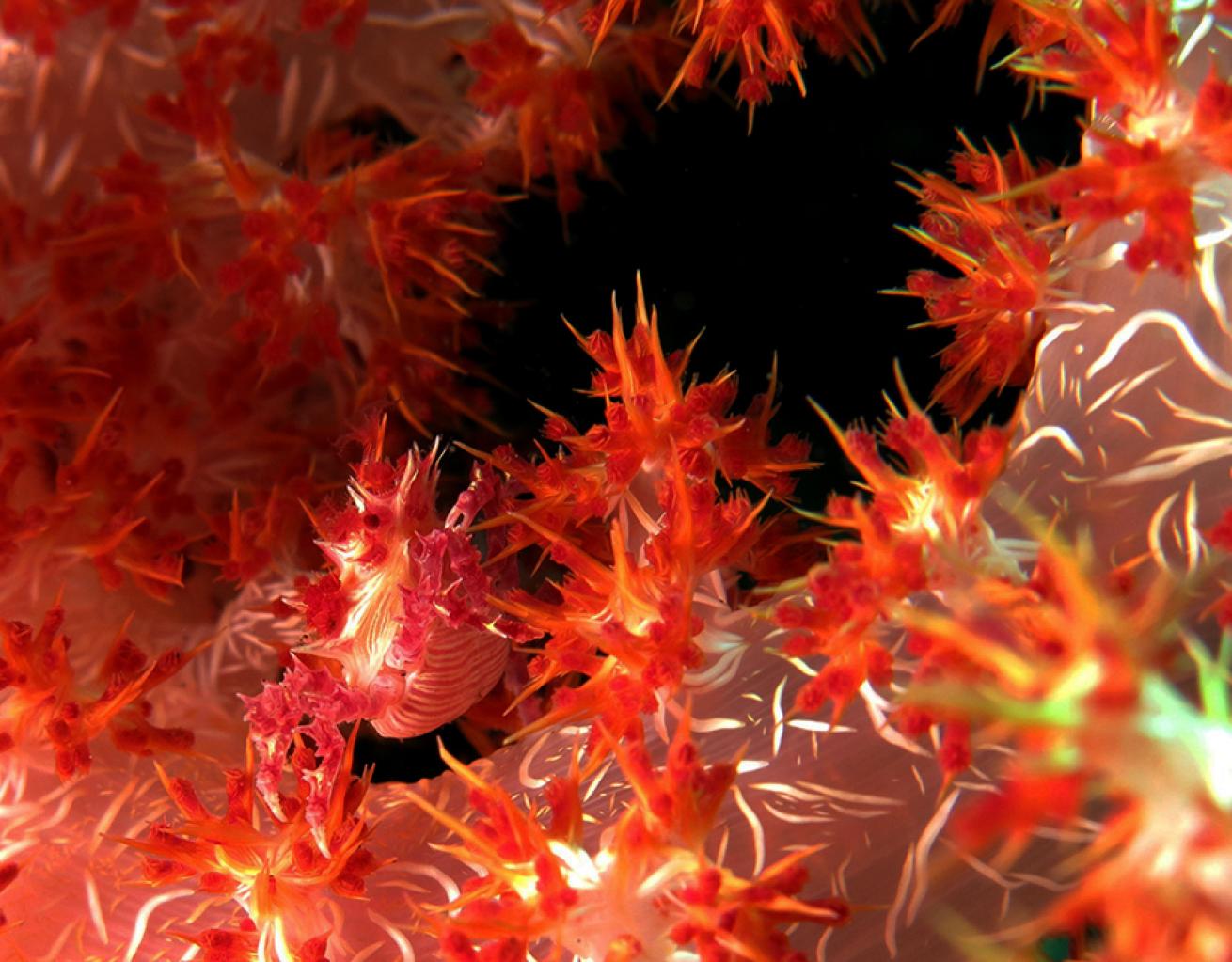
Arthur Borges
The candy crab is also known as the soft coral crab. These crabs sit in hiding amidst their colorful coral habitats feeding on plankton.
Location: Bali, Indonesia
Category: Macro
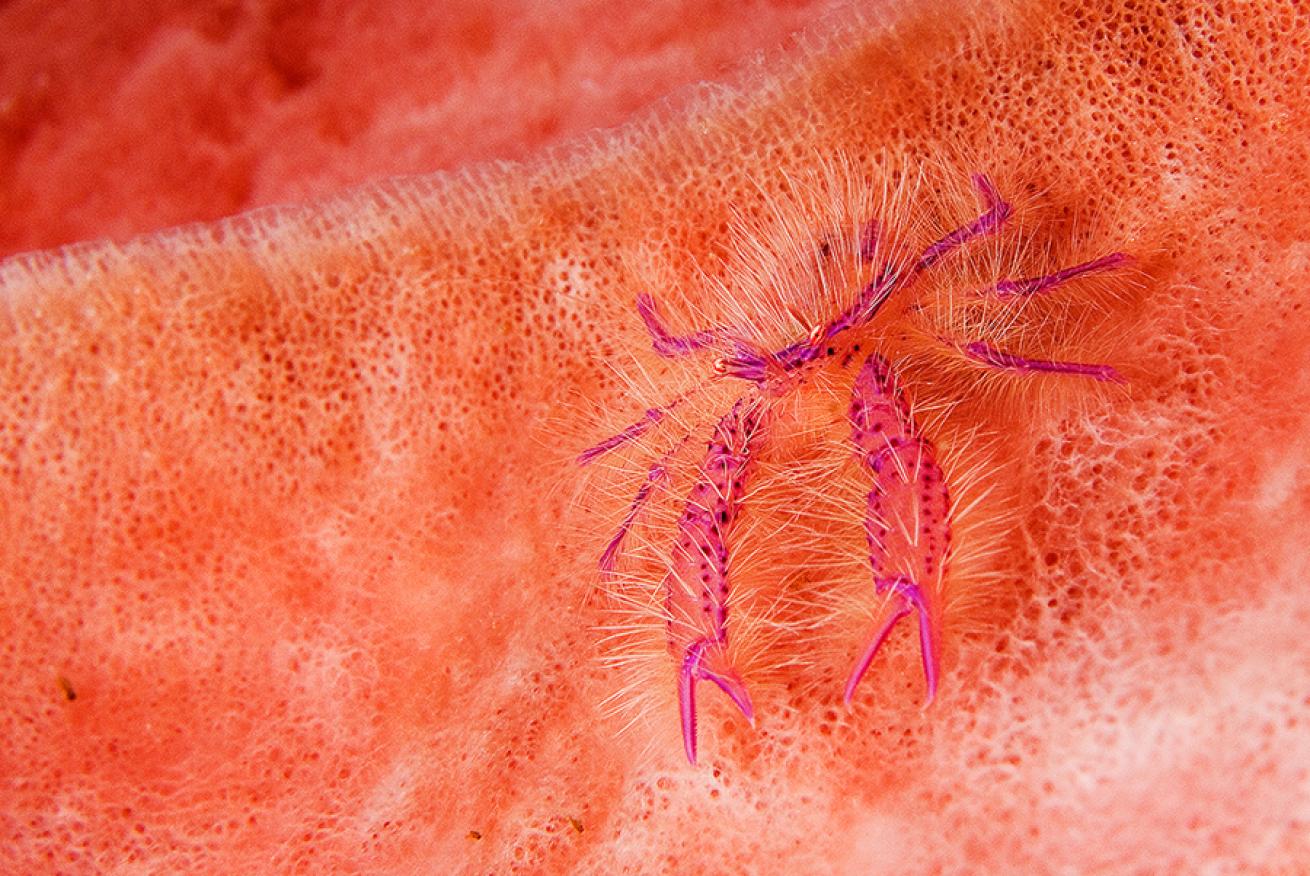
Rick Mowbray
A small, hairy fairy crab tries its best to blend in with its vase sponge home. Once spotted, it displays menacing claws in a warning blaring that you better back up. This fairy doesn't want to play.
Location: Raja Ampat, Indonesia
Category: Macro
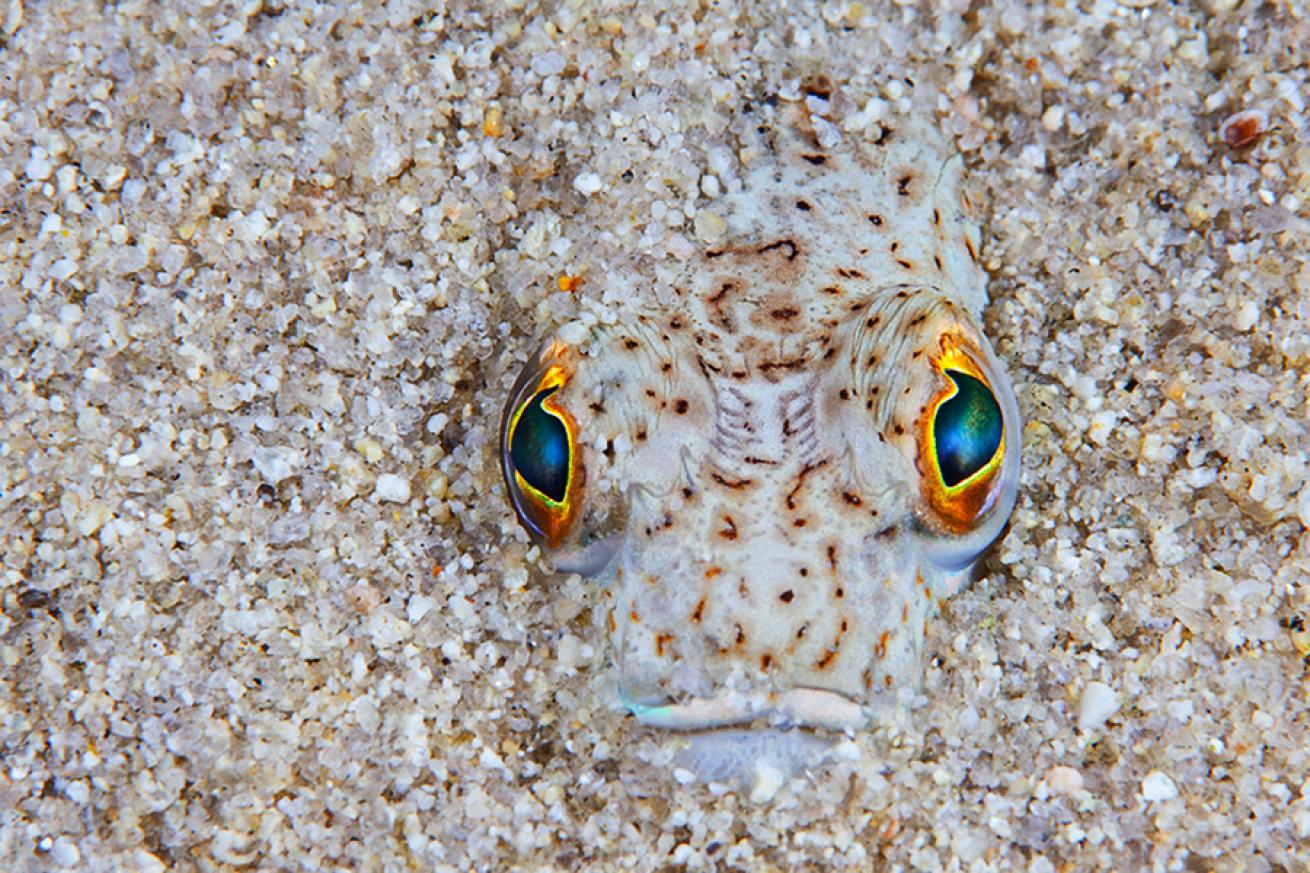
Nicholas Samaras
This master of disguise is known as the lesser weever or Echiichthys vipera. It is a fish of the Trachinidae family and lives buried in the sand, leaving only its head and back slightly visible as it awaits prey
Location: Chalkidiki, Greece
Category: Macro
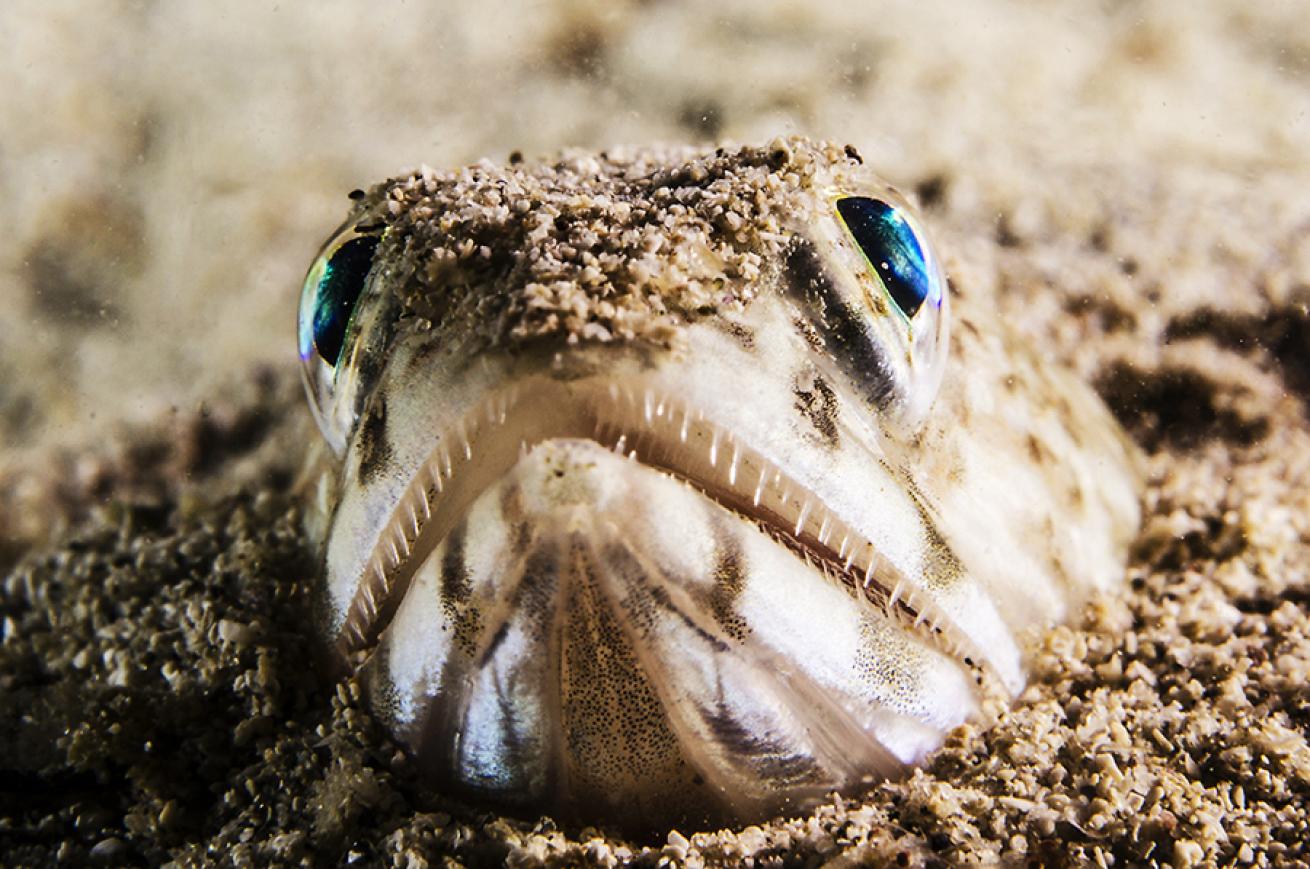
Mauro Di Lecce
This image of another Trachenidae was taken during a night dive. While they primarily hide under the sand in order to jump out and bite their victims, they also have poisonous spines running along their dorsal fins and gills which release a painful toxin that defends them against predators.
Location: Polignano a Mare/Apulia, Italy
Category: Macro
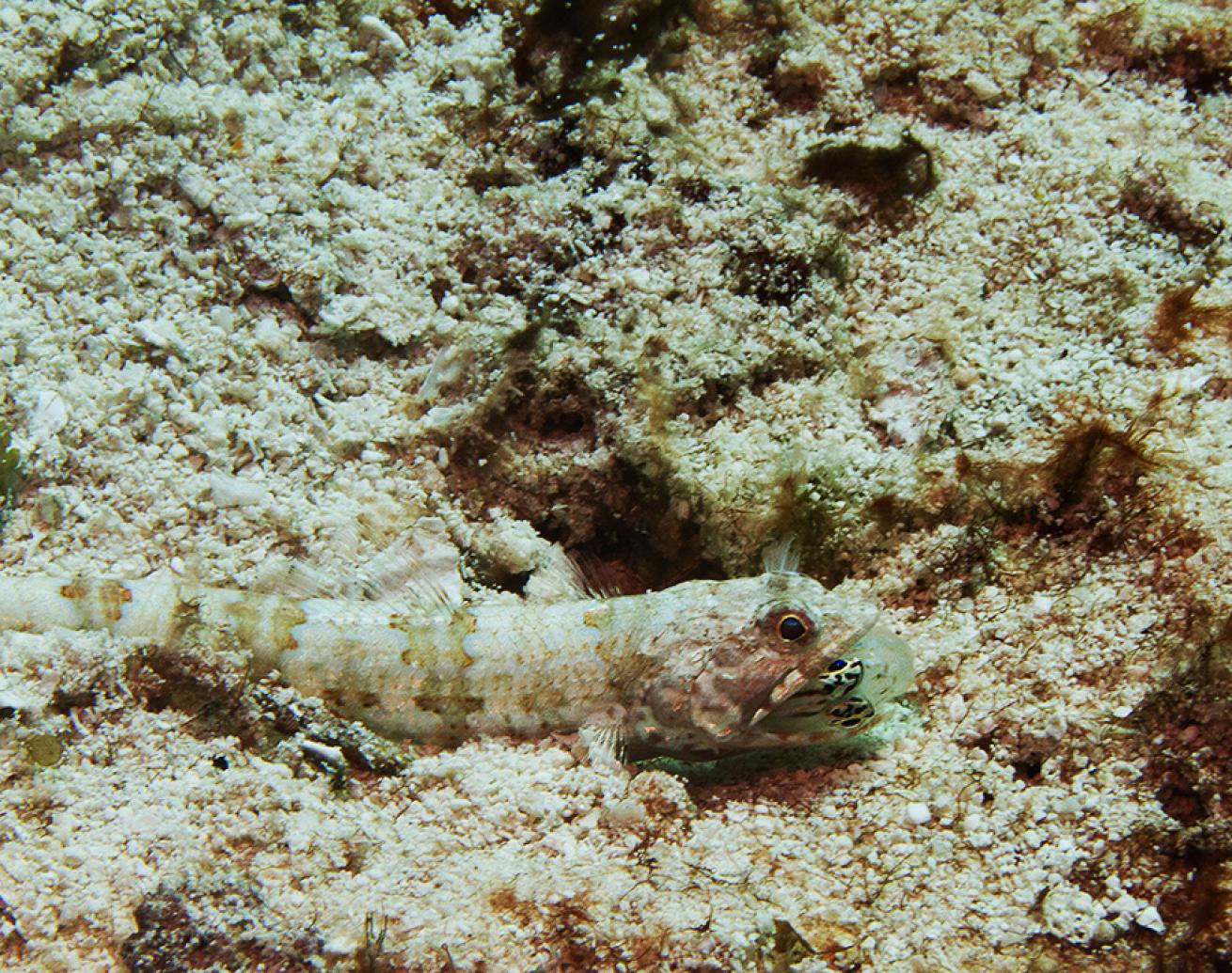
Scott Camphausen
A hungry lesser weever bursts from its hiding place like a ravenous cloak and dagger.
Location: Tormentos Reef/Cozumel, Mexico
Category: Macro
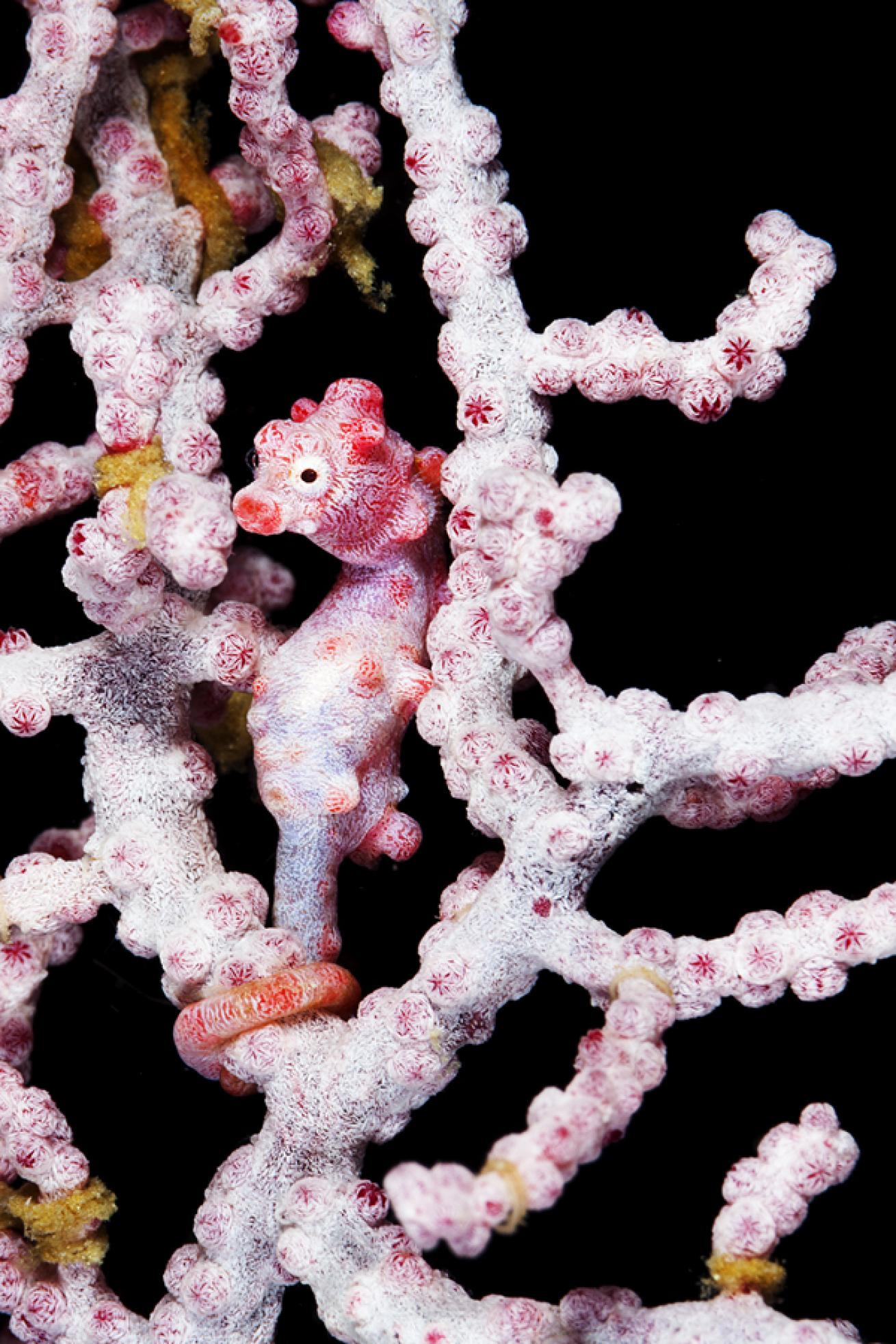
Klaus Stiefel
This is Hippocampus bargibanti aka the pygmy seahorse latched on in hiding to a soft coral. The adaptive camouflage of these tiny fish is incredible, making them extremely difficult to spot amongst the gorgonian coral they inhabit.
Location: Malapascua, Philippines
Category: Macro
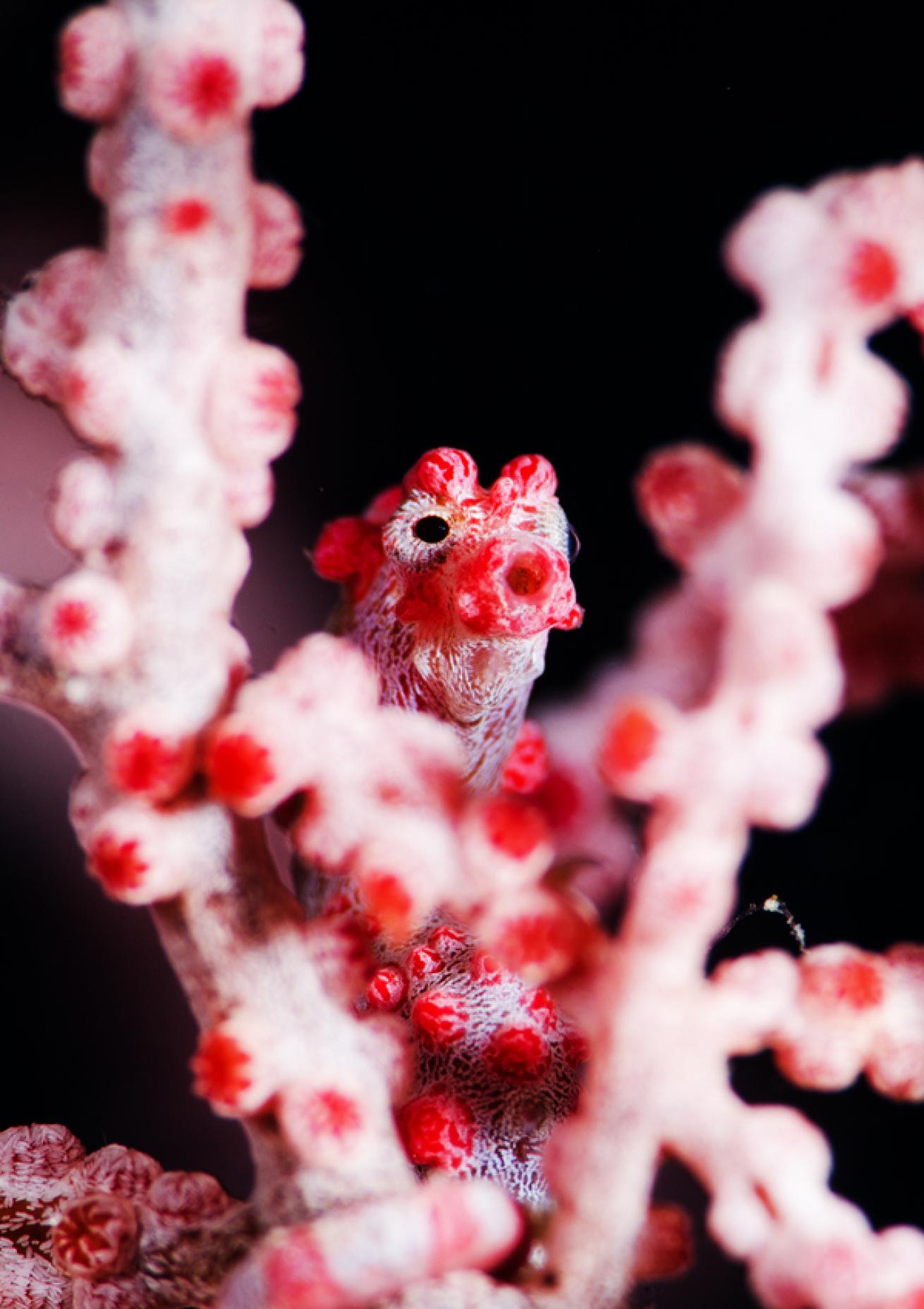
Jan Wenger
The pygmy seahorse is one of the smallest seahorse species in the world, typically measuring less than 2 centimeters in height.
Location: Mabul, Malaysia
Category: Macro
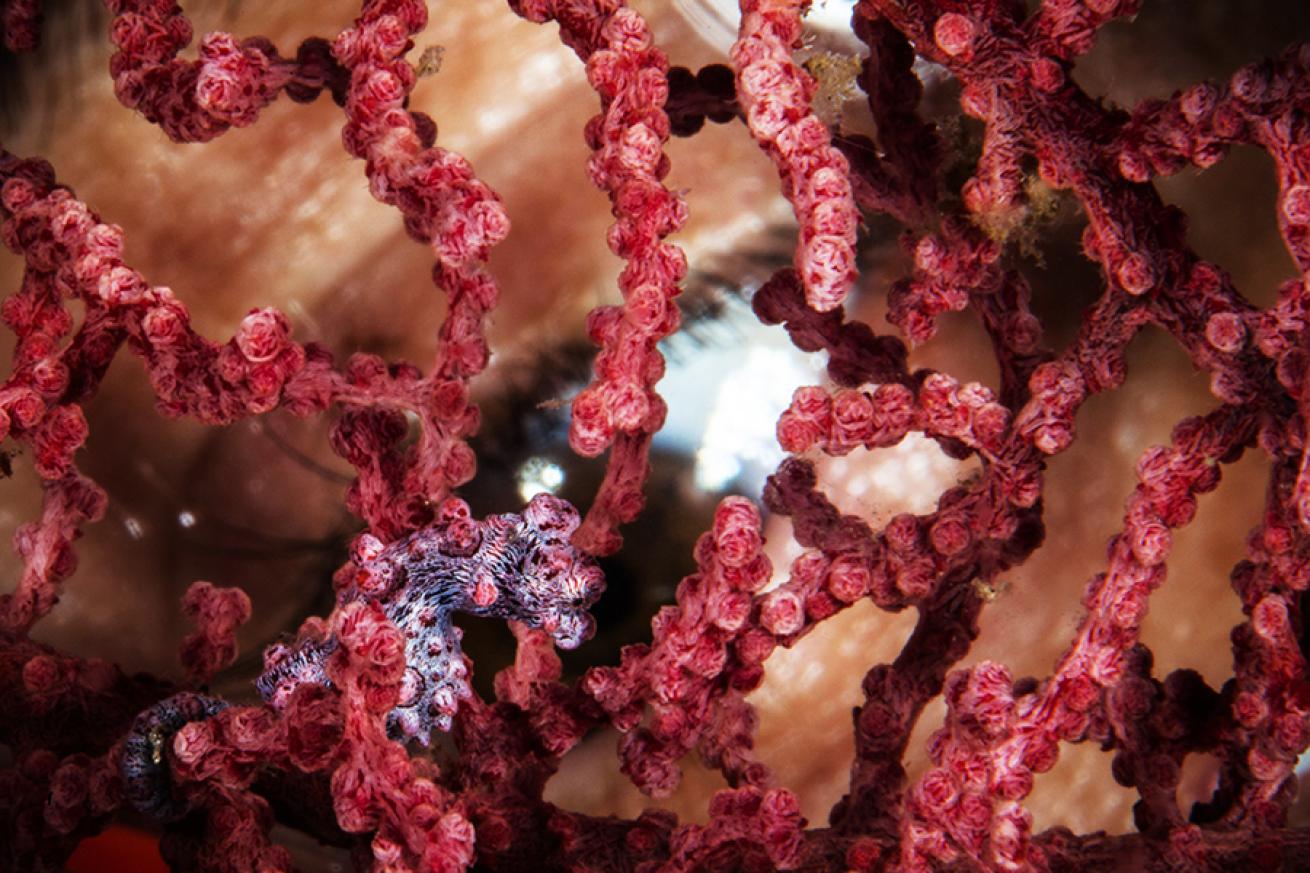
Martin Klein
A pygmy seahorse hides in plain sight. Their prehensile tails allow them to wrap around and cling closely to their anchored surroundings
**Location: ** Lembeh, Indonesia
Category: Divers
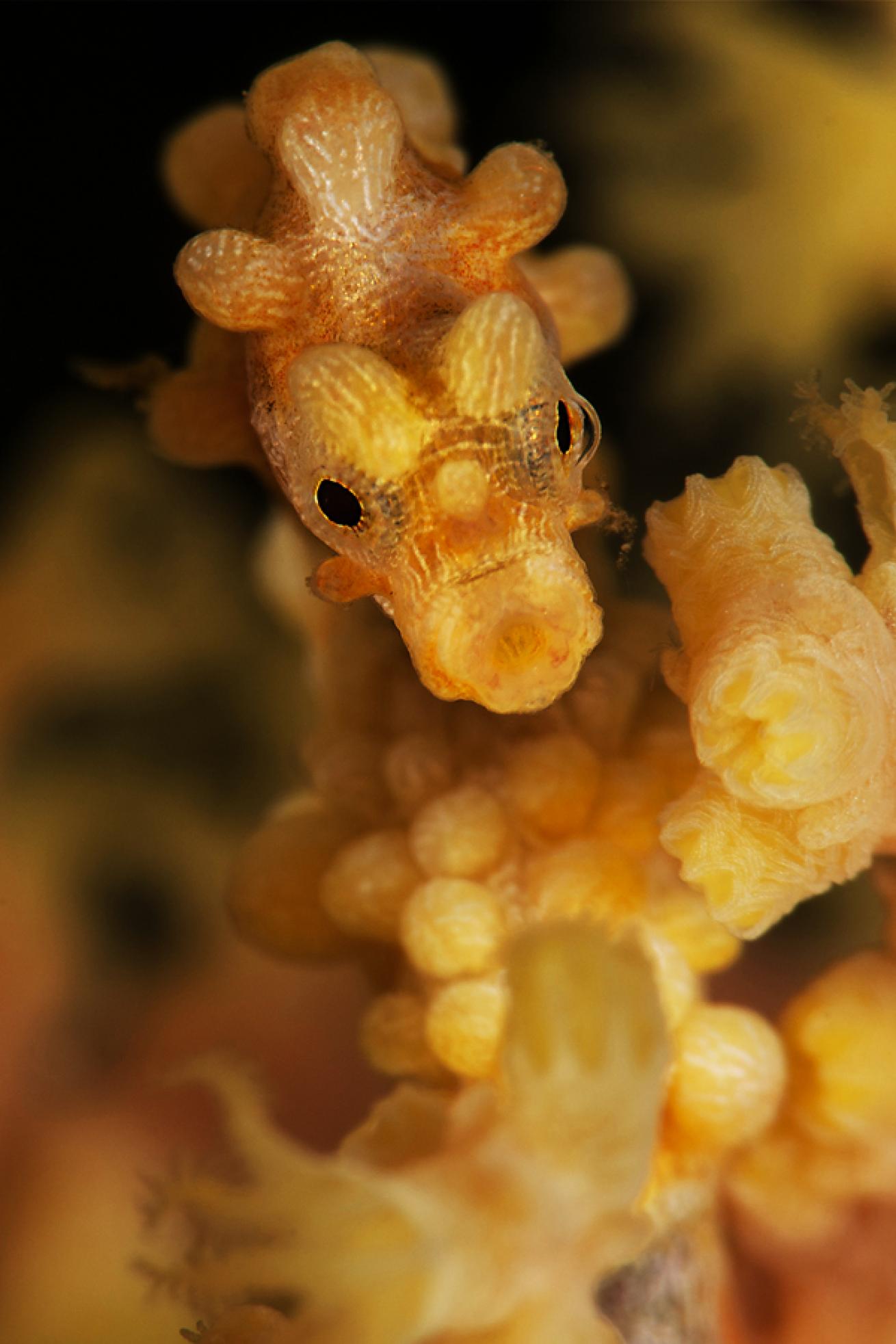
Raffaele Livornese
Here is a yellow pygmy seahorse on its yellow gorgonian. Large, bulbous tubercles cover this species’ body and match the colour and shape of the polyps of its host species of gorgonian coral. There are many different color variations of pygmy’s.
Location: Philippines
Category: Macro
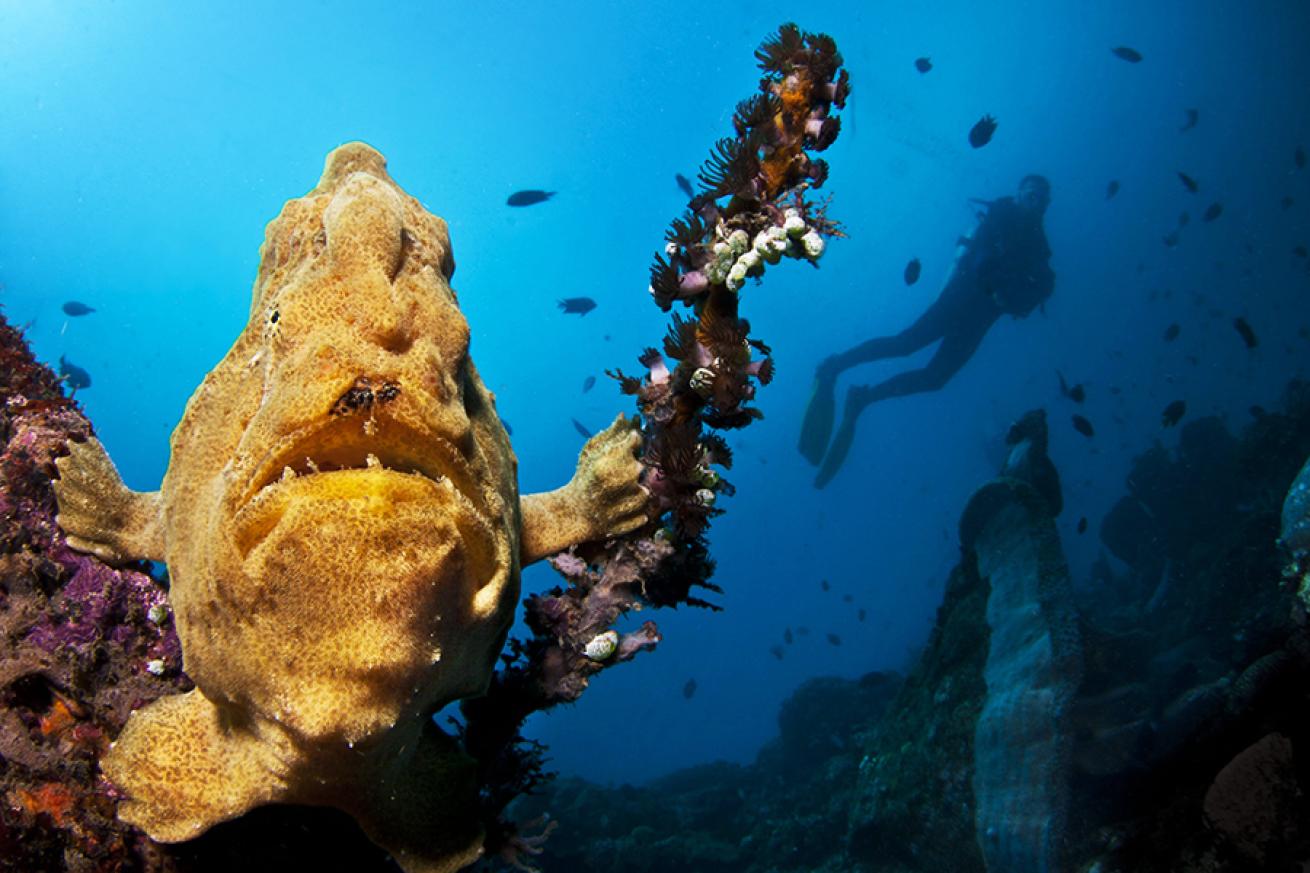
Martin Klein
This is Antennariidae aka the frogfish, considered by many the oceans’ greatest masters of disguise. Unlike many other sea creatures that use camouflage as a defense to avoid predators, Frogfish use their master abilities as predators to sneak up on and attract prey.
Location: Lembeh, Indonesia
Category: Divers
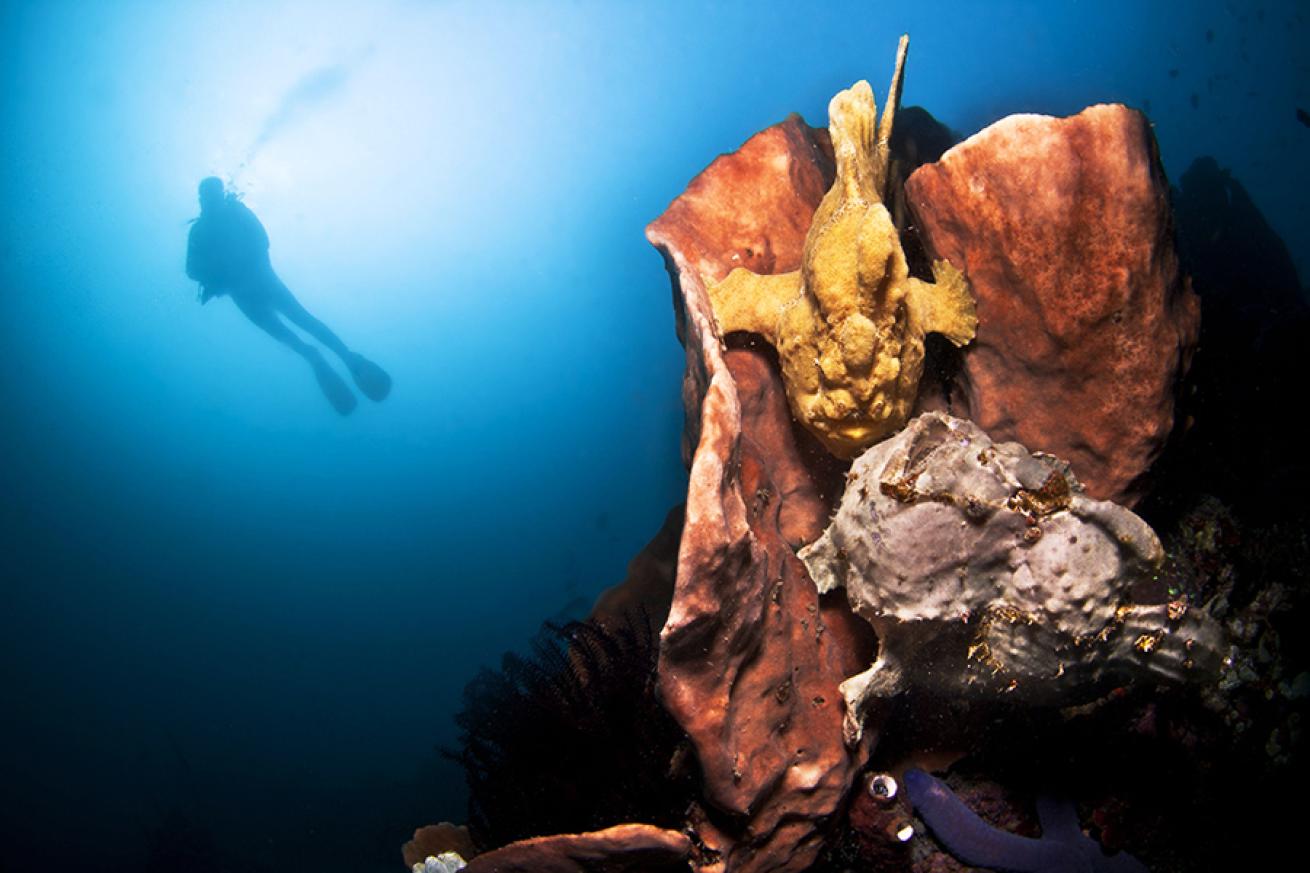
Martin Klein
Frogfish are carnivores who are known for eating crustaceans, nearby fish and even other frogfish! After mating, the smaller male must quickly retreat away from his mate or risk being eaten by its female counterpart.
Location: Lembeh, Indonesia
Category: Wide-Angle
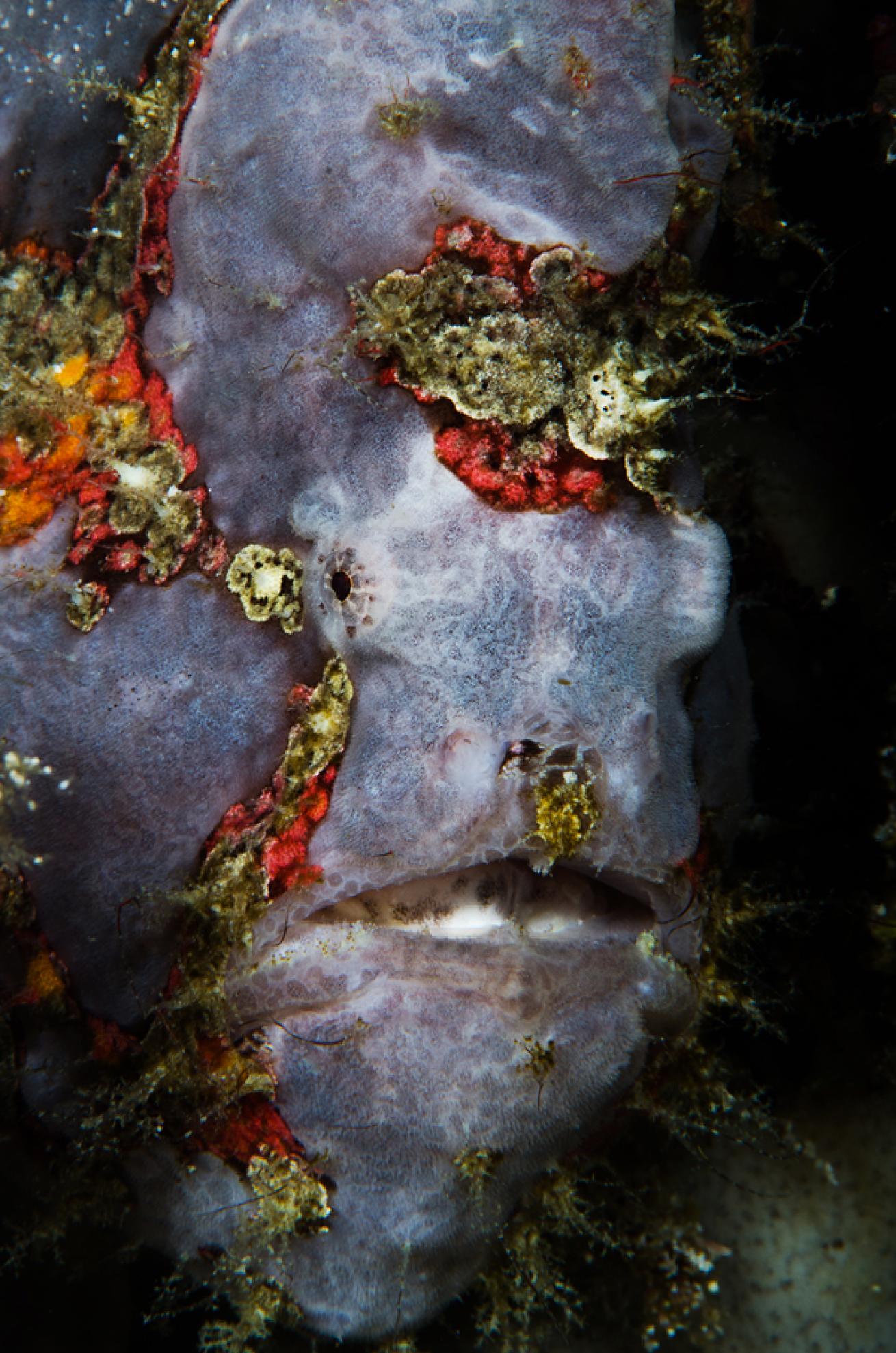
Dmitry Starostenkov
This abstract portrait of a frogfish shows off its macabre beauty. As it blends in with its coral surroundings, nature shows how great a masterful artist it can be with the frogfish being an evolutionary canvas.
Location: Bohol, Philippines
Category: Macro
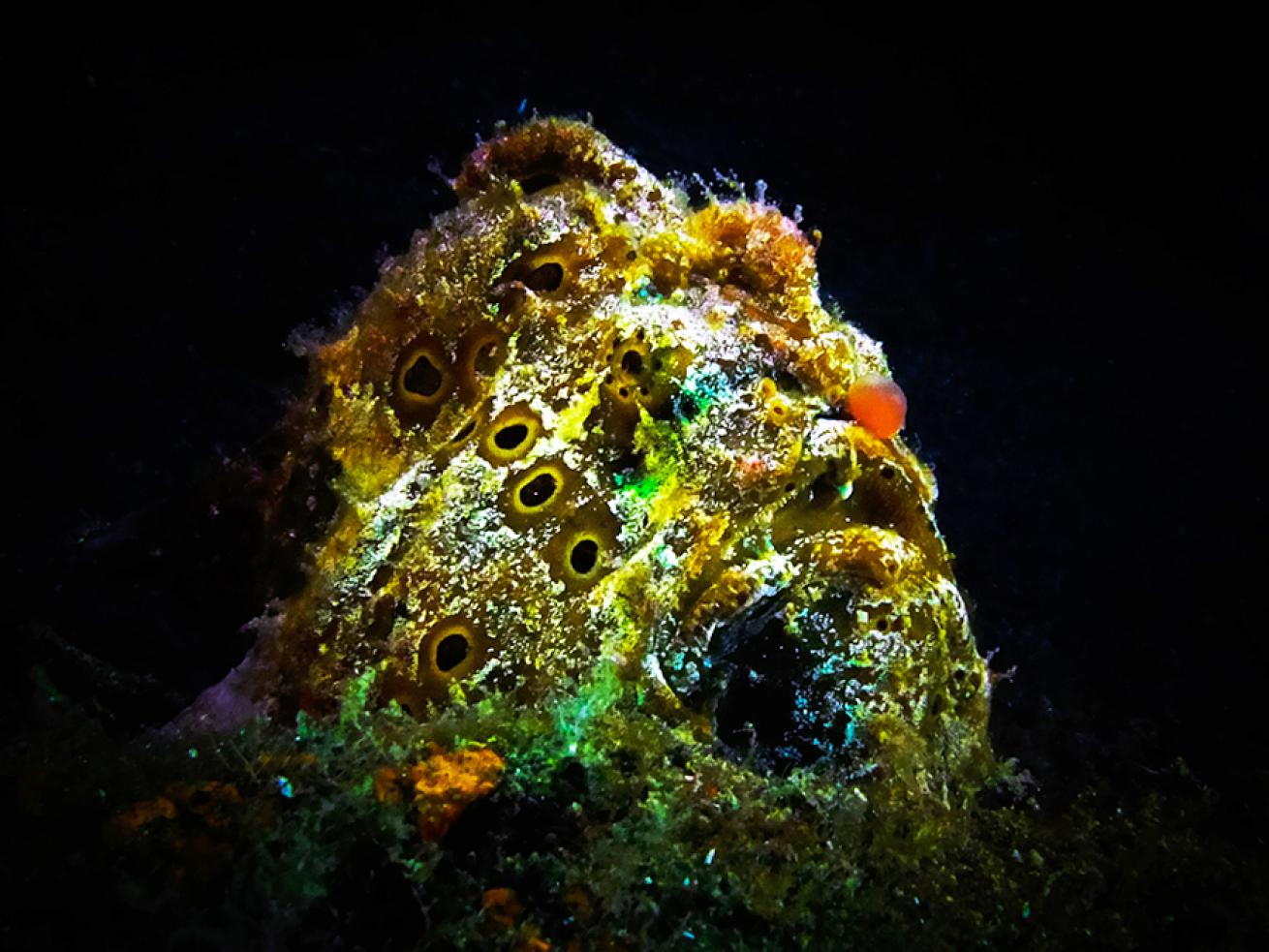
Donny Donny
Here is an amazing frogfish disguise adapted to portray a coral head. Frogfish have a modified dorsal fin topped with a wriggling lure that resembles a shrimp or worm that is used to attract their prey. If the lure is lost or eaten, it is able to be regenerated.
Location: Lembeh Strait, Indonesia
Category: Macro
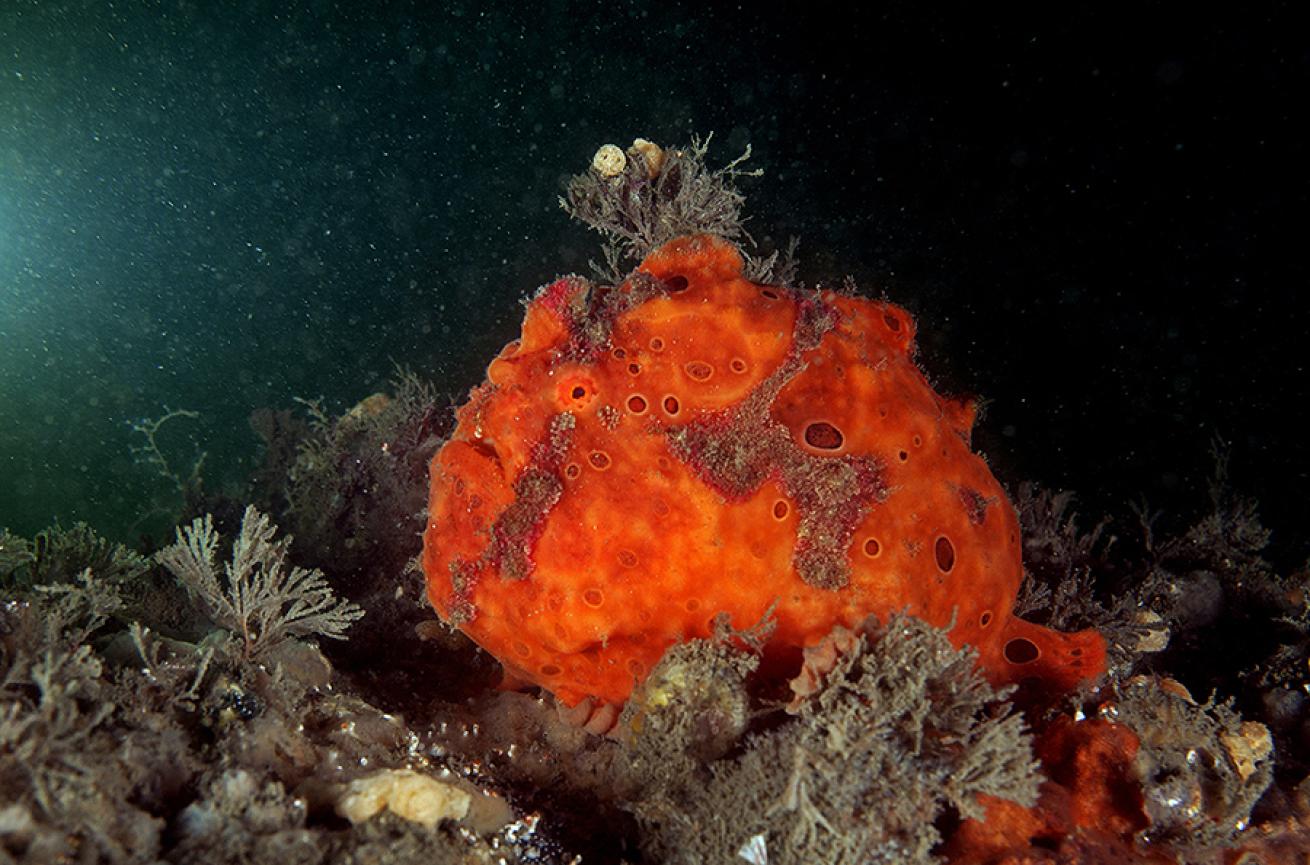
Gaetano Gargiulo
This vibrant frogfish mimics fire coral. Frogfish often move by jet propelling themselves along the ocean currents or can use their pelvic fins to walk stealthily amidst the sea floor coral.
Location: Chowder bay (NSW), Australia
Category: Macro
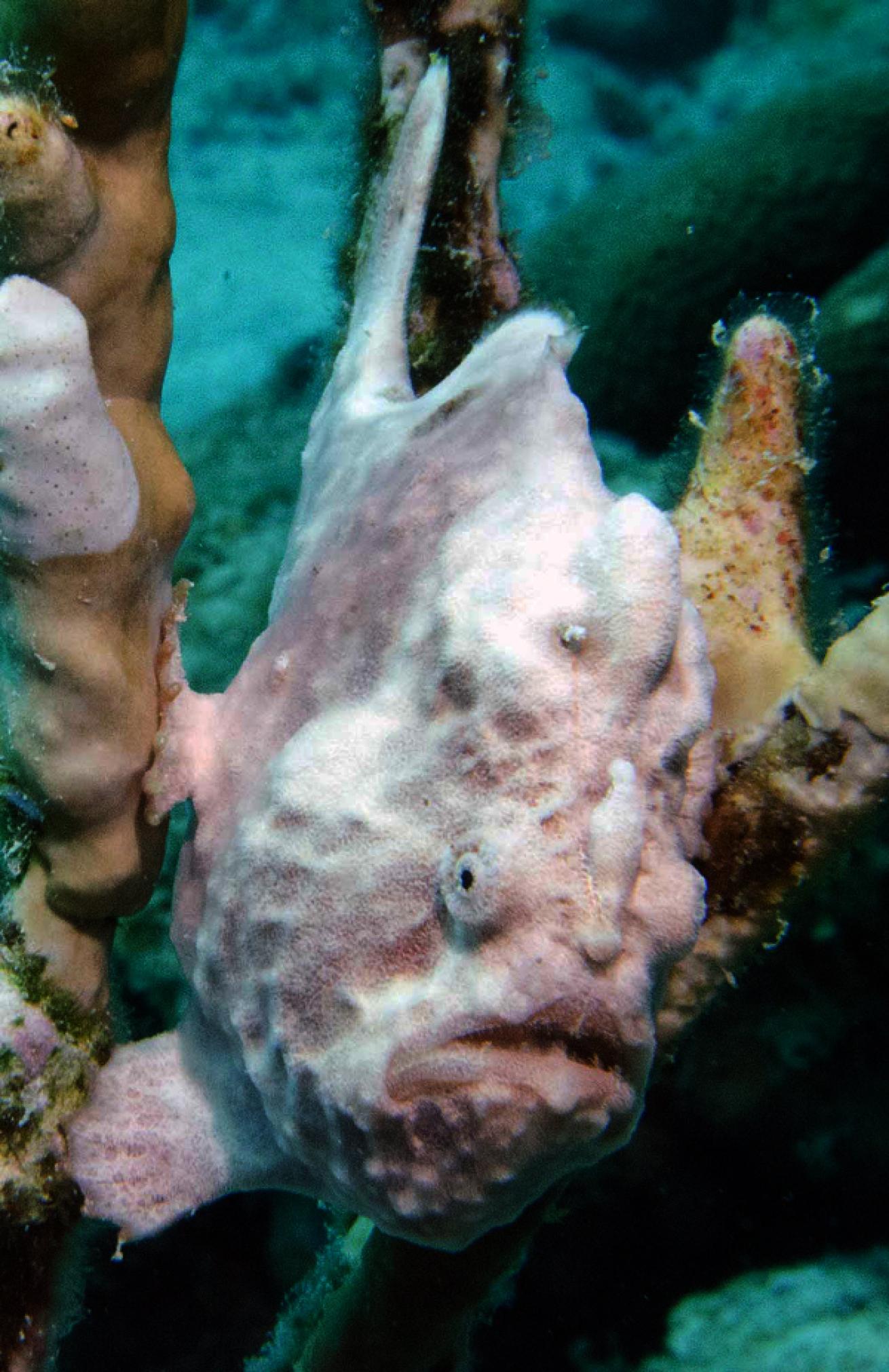
Kelly Sobczak
This frogfish was very still and was nestled cozily in the coral. The species can be found throughout tropical and subtropical oceans and seas off the coastlines of Africa, Asia, Australia and North America. Next time you take a dive, keep an eye out and take a closer look at the surrounding reefs.
Location: Bonaire
Category: Macro
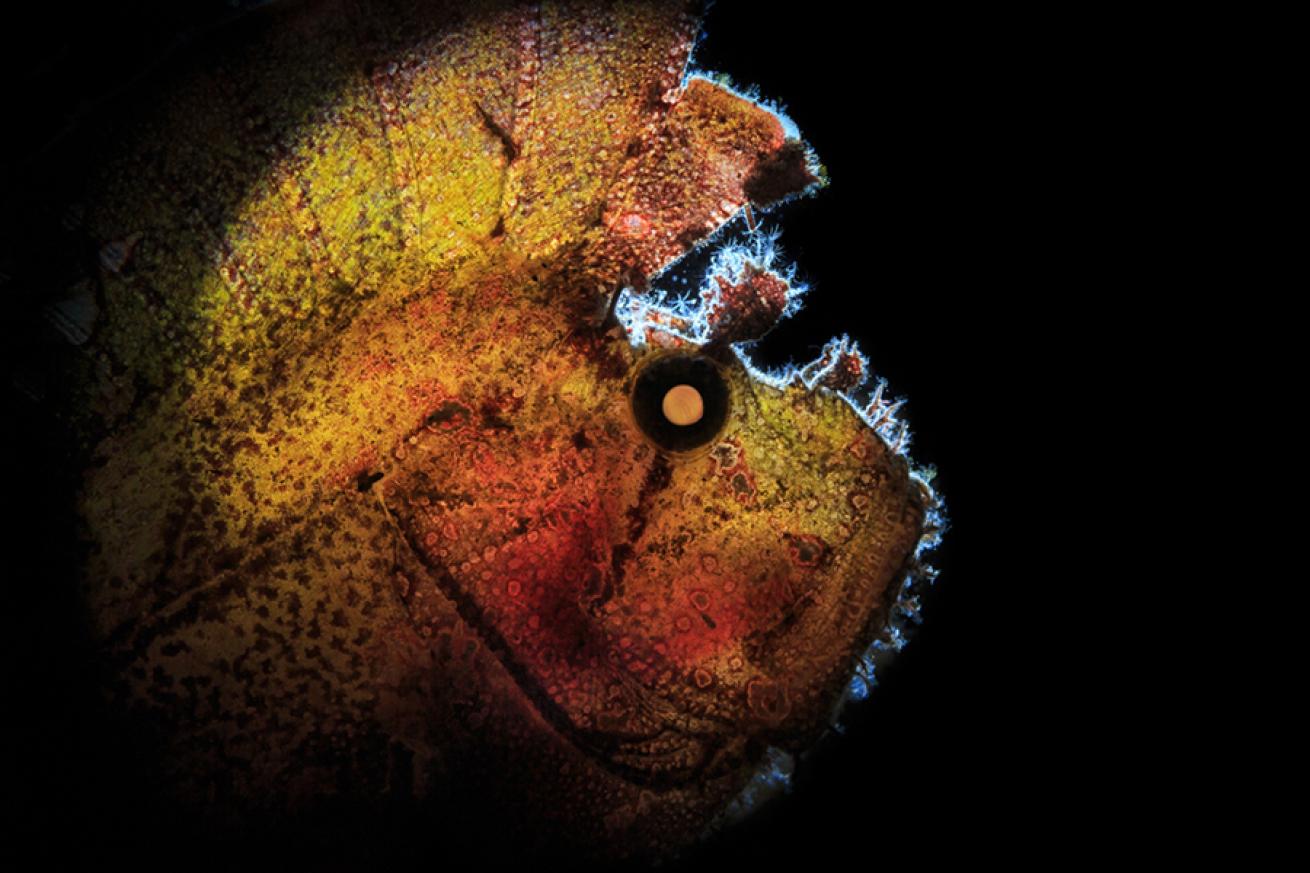
Marcello Di Francesco
A leafy frogfish poses dramatically against the dark waters. Sometimes when they feel threatened, they inflate like a puffer fish in self-defense. Frogfish wave built-in lures and wait patiently for unsuspecting meals to come along and nibble.
Location: Maratua Island, Indonesia
Category: Macro
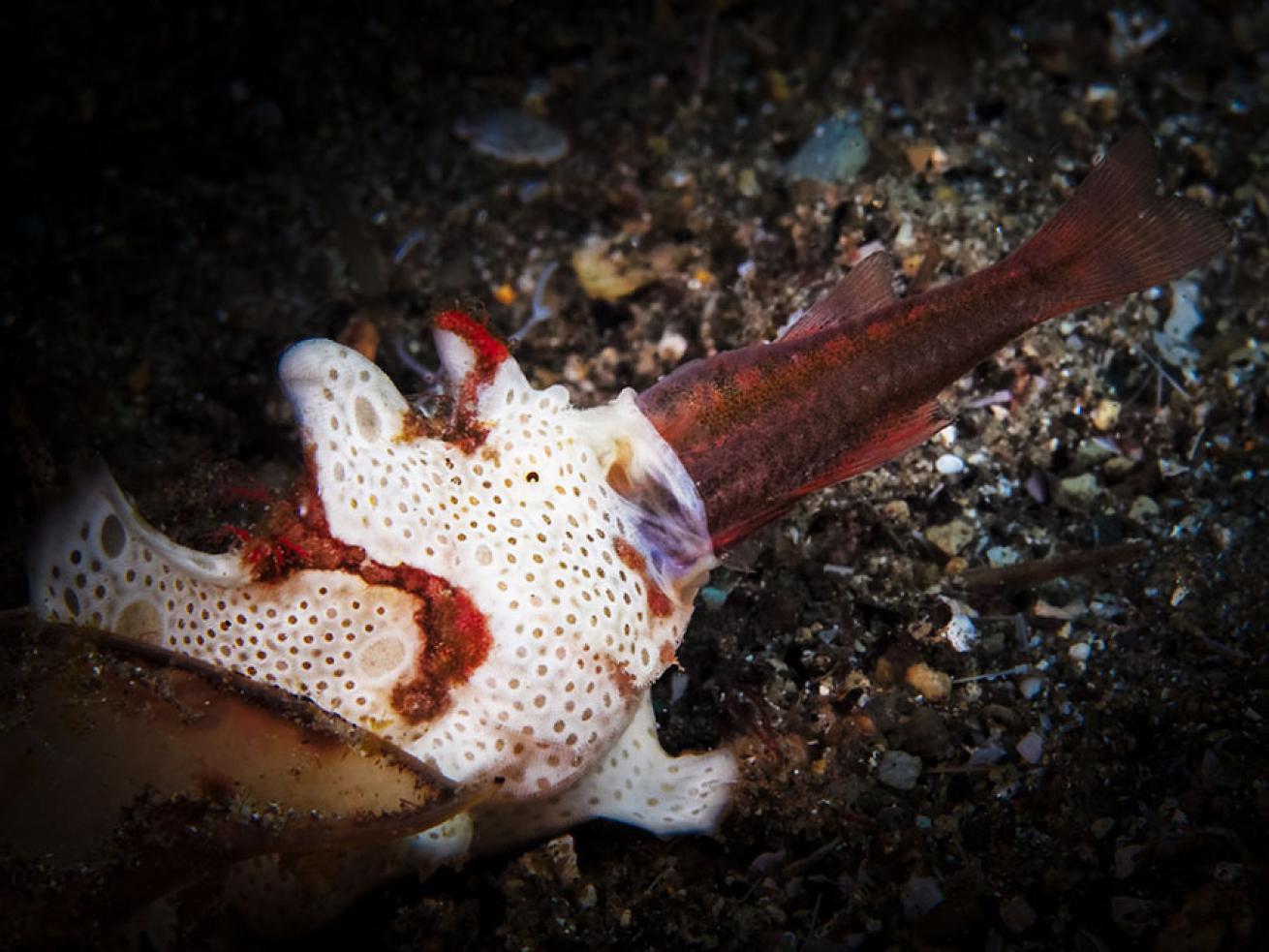
Lynn Wu
Frogfish will ambush their prey by using camouflage and lying very still. Their mouths can open to be rather quite large, often accommodating fish almost their own size!
Location: Anilao, Philippines
Category: Behavior
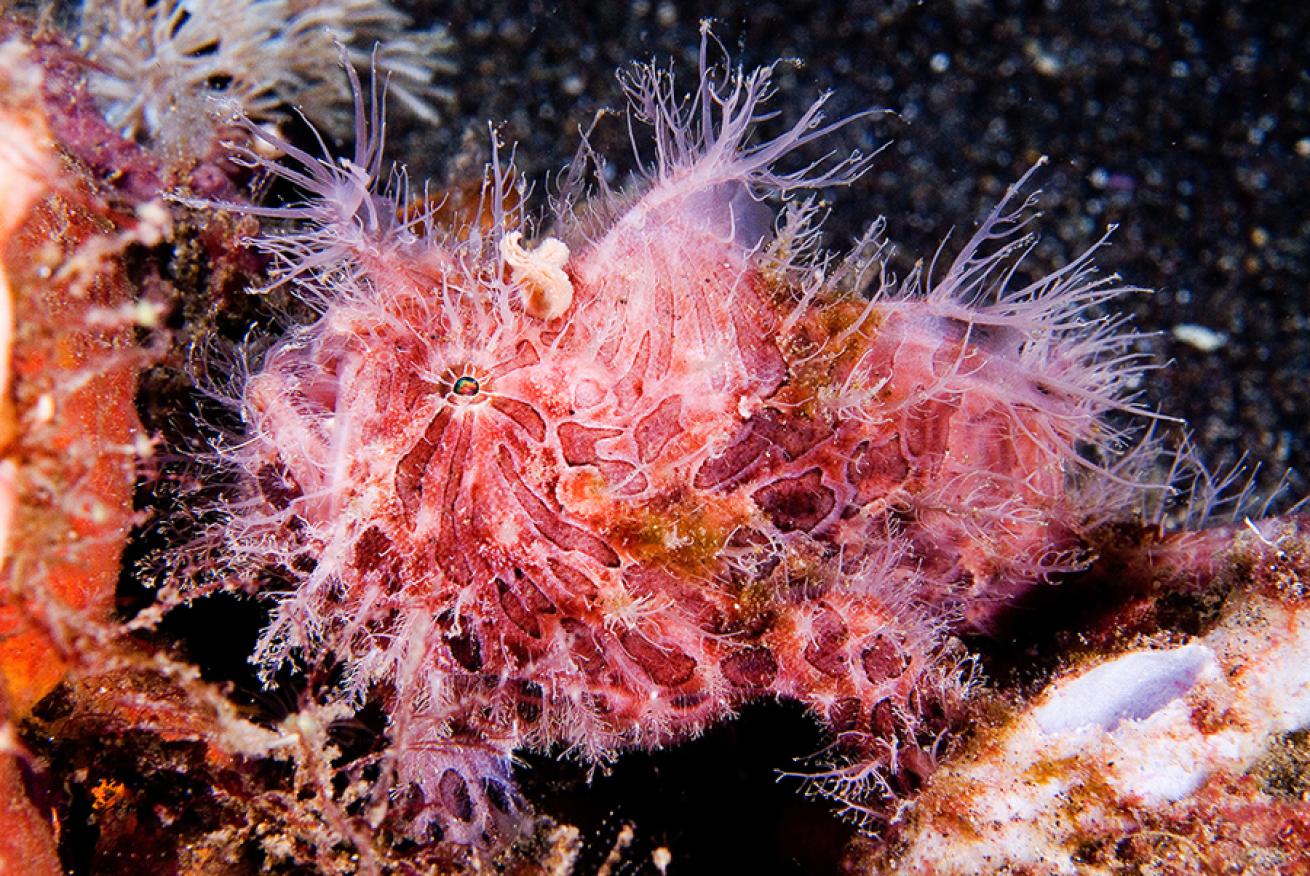
Rick Mowbray
Many bizarre creatures inhabit the volcanic sand floor of Lembeh, Indonesia. Hairy frogfish are just a small fraction of the abundance of strange aquatic life lurking there.
Location: Lembeh, Indonesia
Category: Behavior
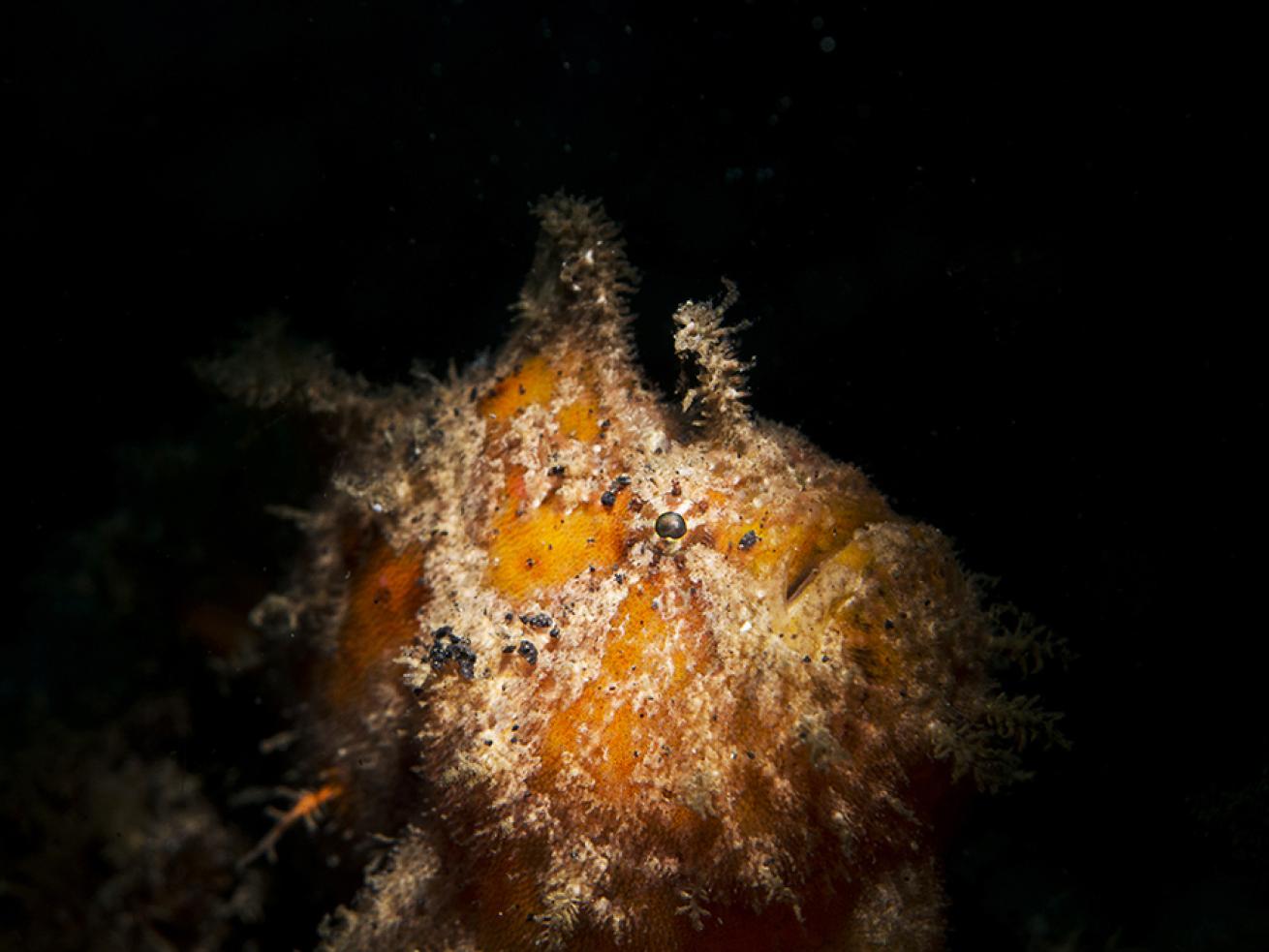
Patty Woo
Another one of many frogfish variations. The unusual shapes and skin textures of hairy frogfish allow them to perfectly blend in with their reef surroundings. Their soft skin is covered with irregularly scattered spinules that resemble hairs that mix in as underwater foliage.
Location: Lembeh, Indonesia
Category: Macro
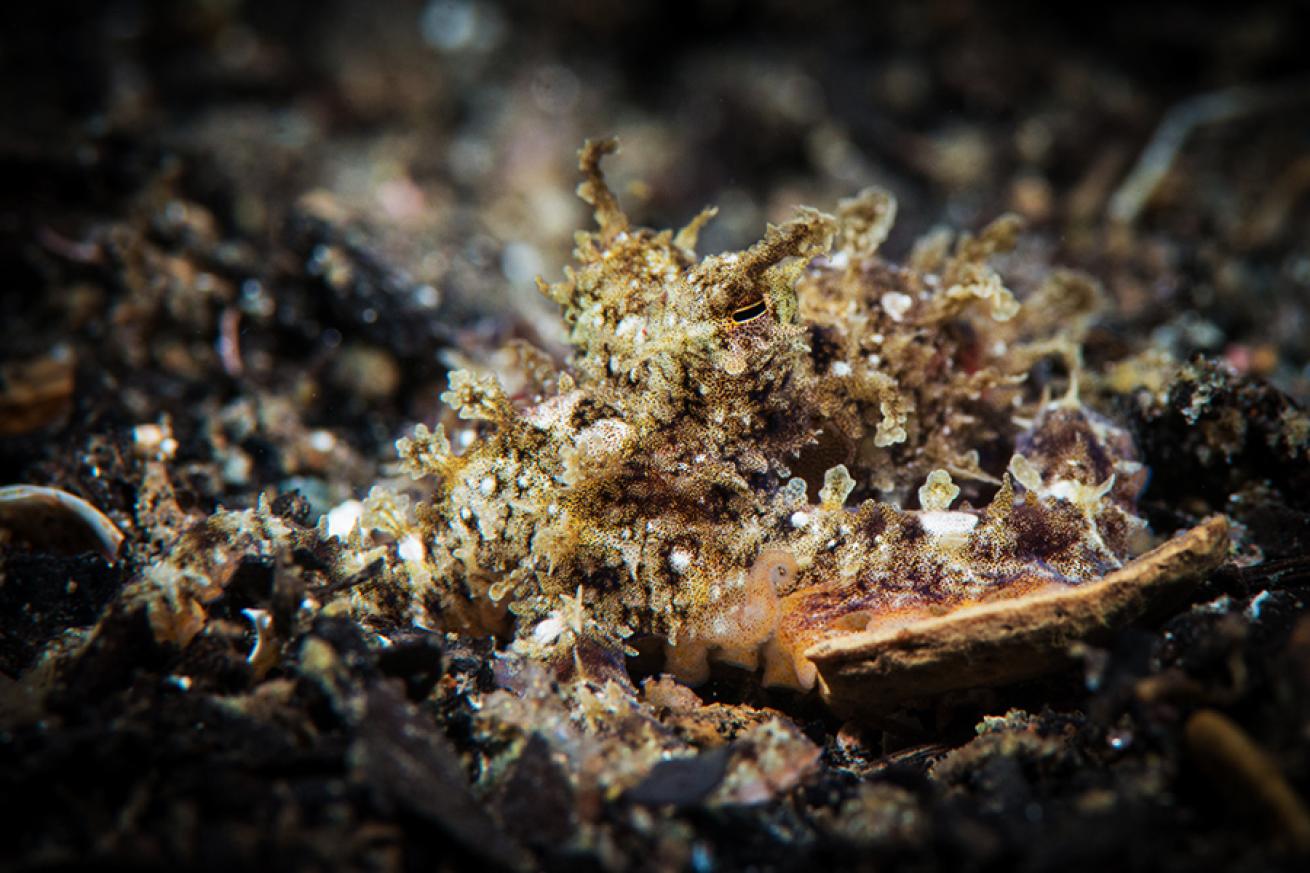
Jeff LaFrenz
A hairy octopus lays watchful in full camouflage. These creatures are extremely rare to find due to their incredible ability to change and blend in with the colors and textures of the surrounding sea floor.
Location: Komodo, Indonesia
Category: Behavior
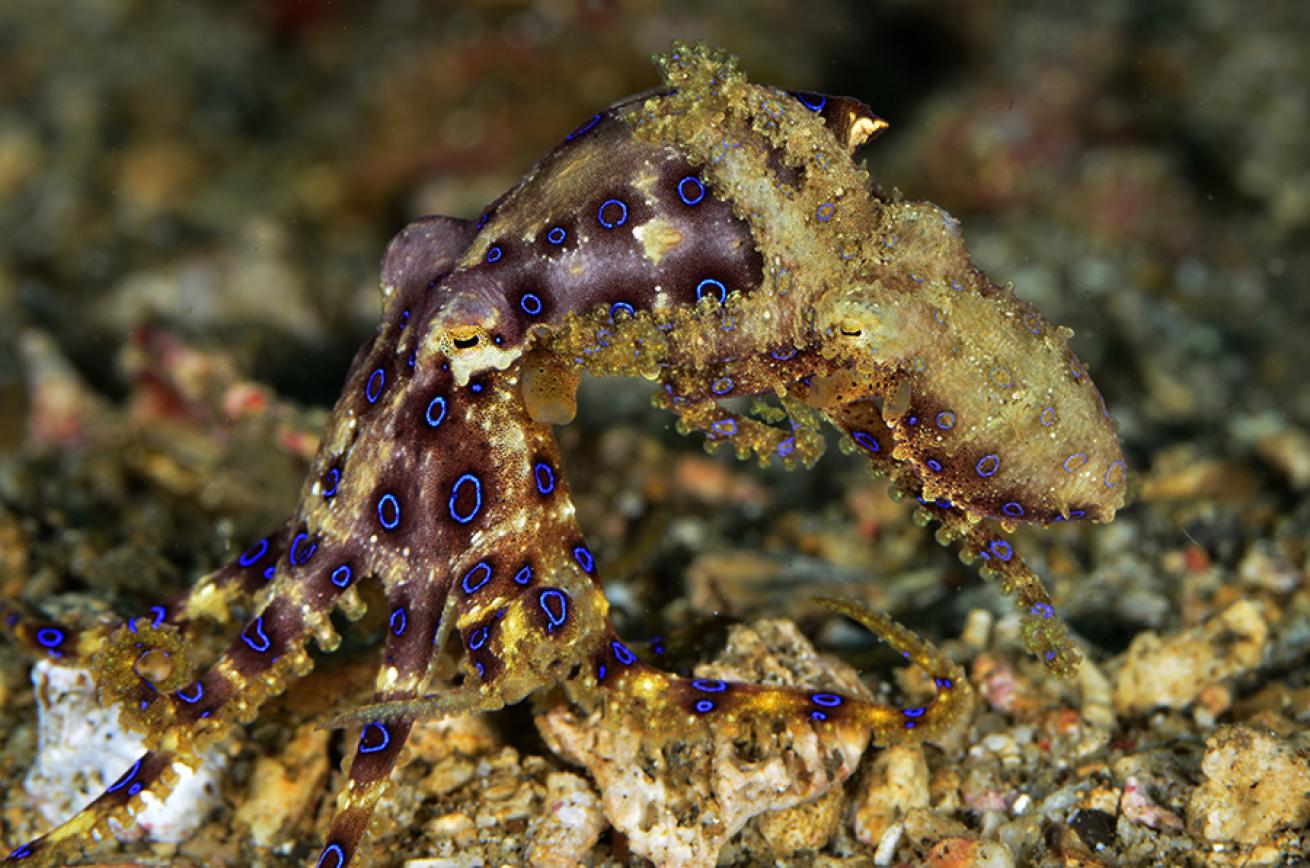
Fayol Chan
When capturing this female Blue-Ringed Octopus, all of sudden a smaller male came out from far behind and hooked! These unique creatures were caught in camouflaged splendor as they started getting their baby-making on!
Location: Lembeh Strait, Indonesia
Category: Behavior
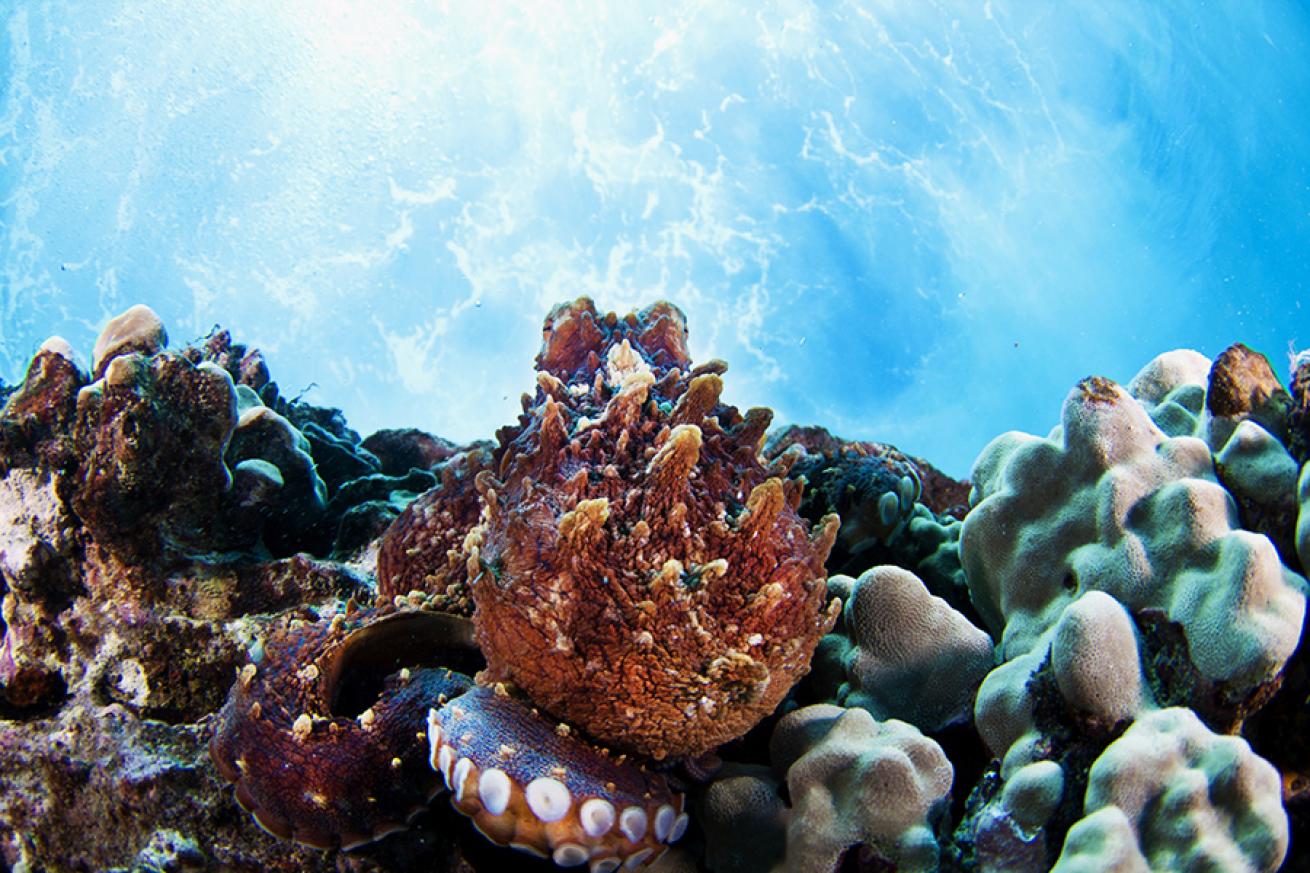
Jeff Milisen
This is Octopus cyanea aka the day octopus. This guy clings amidst the Hawaiian surf zone as it takes refuge in the near-shore surge to bask in the shallow sunlight. The color and textures of its body allow it to remain camouflaged as it mimics a coral head anchored against the hard coral reef.
Location: Portlock/Oahu, Hawaii
Category: Wide Angle
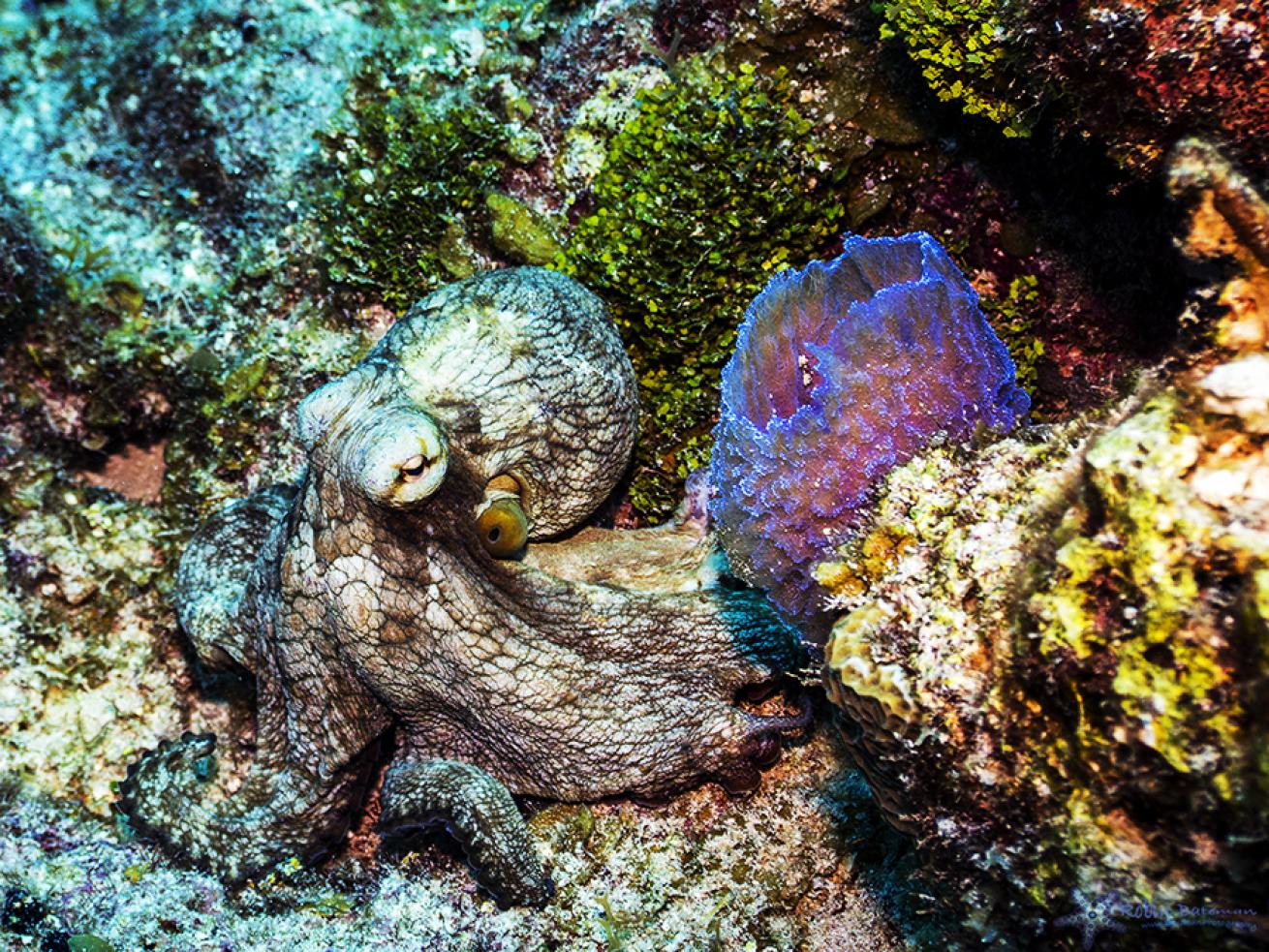
Robin Bateman
A curious octopus blends in with its surroundings. Octopuses are considered to be the most intelligent of the world’s invertebrates, known even for using tools like sunken coconut shells and putting them together into makeshift camouflaged shelters. Ingenious!
Location: Bonnie's Arch, Grand Cayman
Category: Behavior
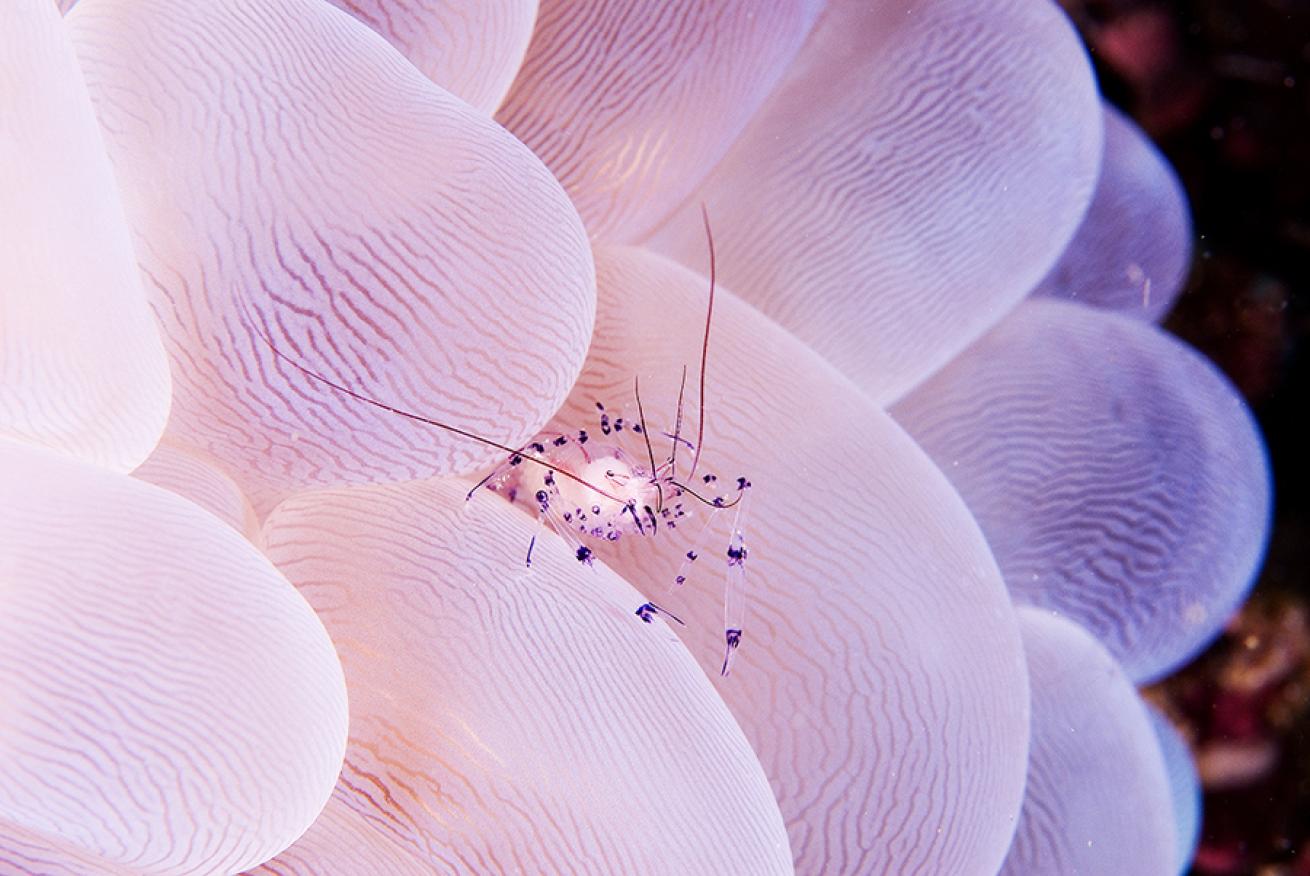
Rick Mowbray
Here is a picture of a translucent purple-spotted mantis shrimp perched perfectly upon an anemone, almost invisible to the naked eye.
Location: Indonesia
Category: Macro
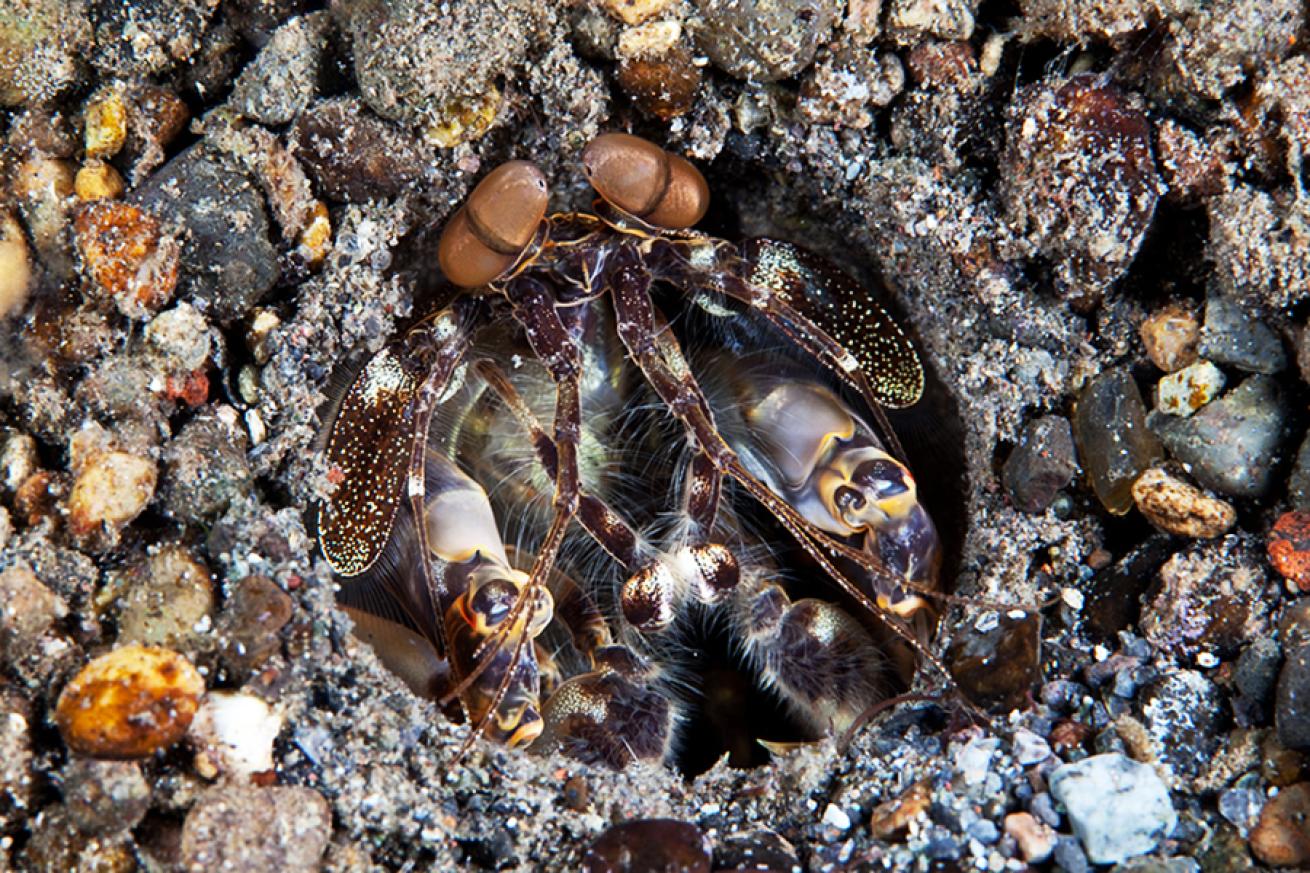
Nicholas Samaras
This is Odontodactylus scyllarus aka the peacock mantis shrimp. These guys spend most of their lives tucked away in their burrows and holes waiting for their prey to float on by for the right moment to strike with their mantis-like claw strikes.
Location: East of Flores / Indonesia
Category: Macro
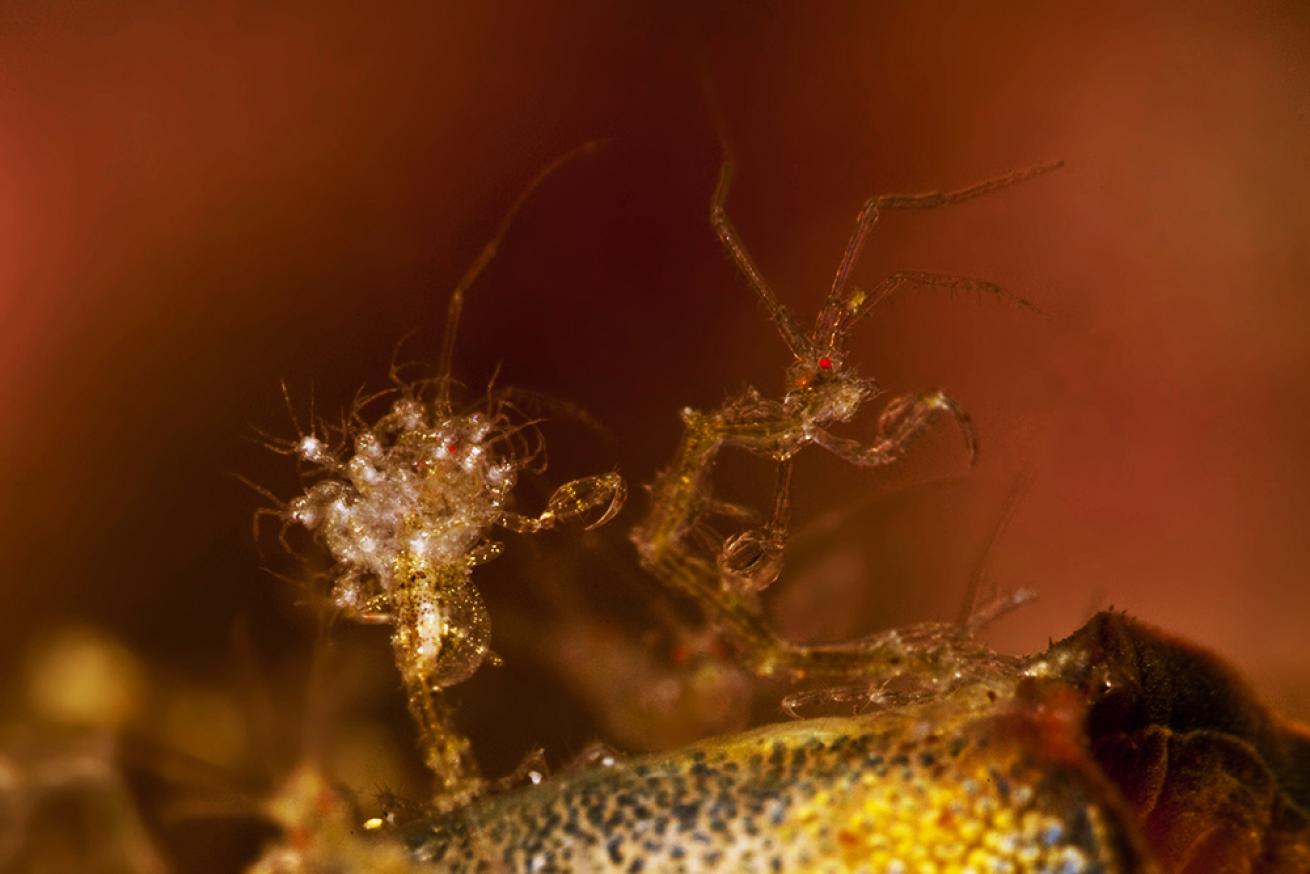
Martin Klein
This is caprellidae aka the skeleton shrimp. Their threadlike slender body allows them to virtually disappear among the fine filaments of seaweed of their ocean environments.
Location: Komodo, Indonesia
Category: Macro
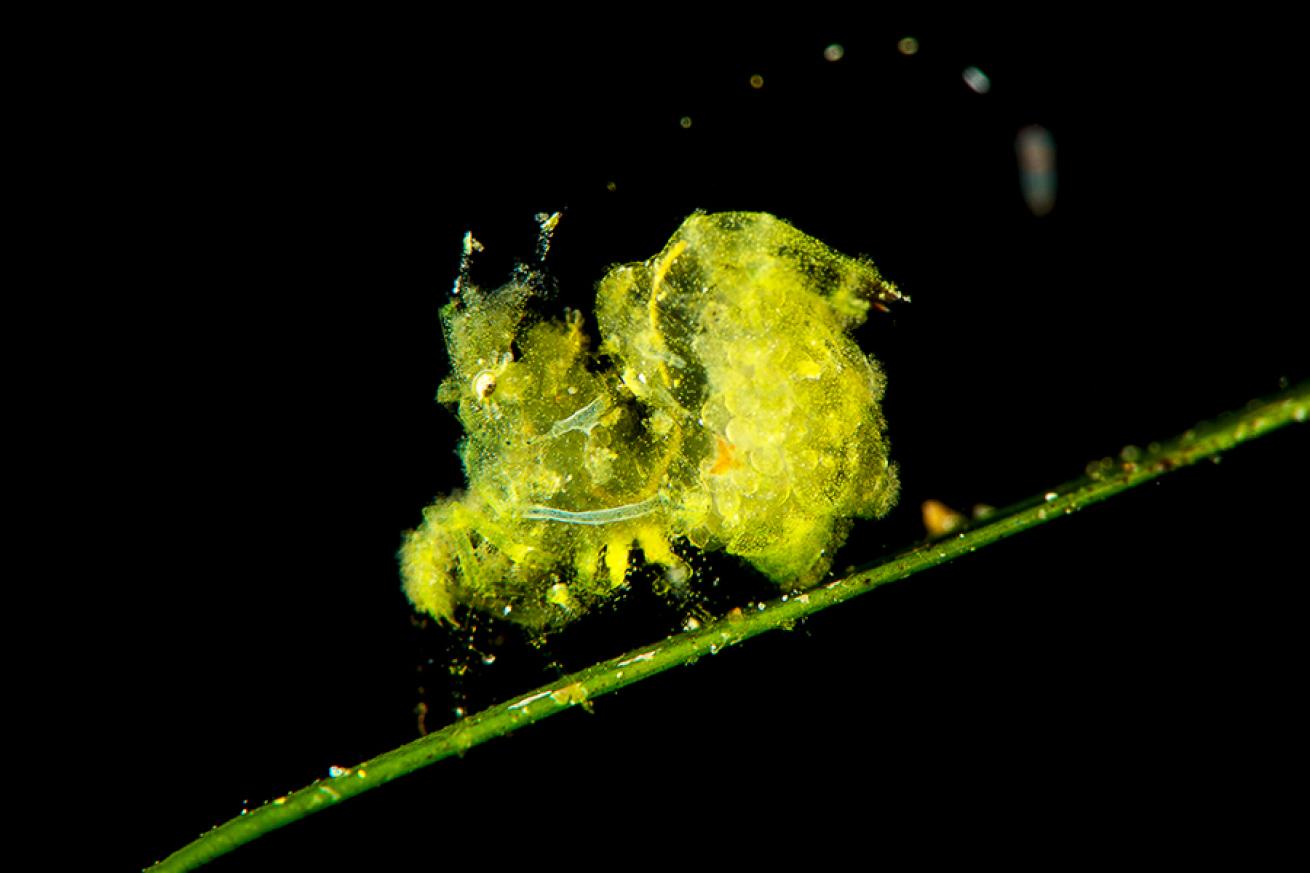
Jeffrey de Guzman
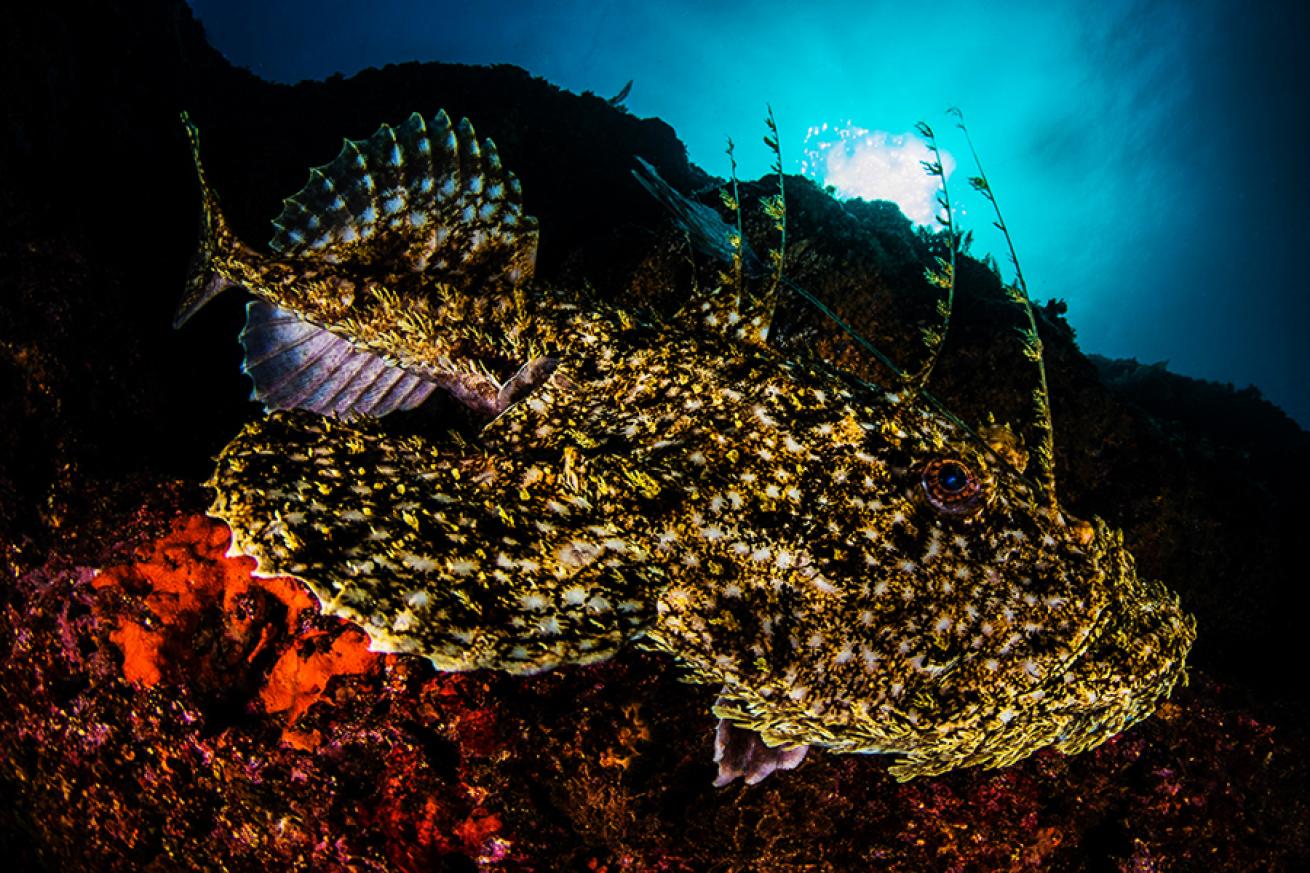
Marco Gargiulo
Lophius piscatorius aka the Mediterranean anglerfish. The anglerfish lies half-buried in the mud or sand, disguised on the bottom of the sea. It attracts fish to its huge mouth by means of its lure. Once prey is lured, they are drawn into its mouth by a sudden inrush of water. This method of feeding is signature of anglerfish worldwide.
Location: Baia di Puolo/Massa Lubrense, Italy
Category: Wide Angle
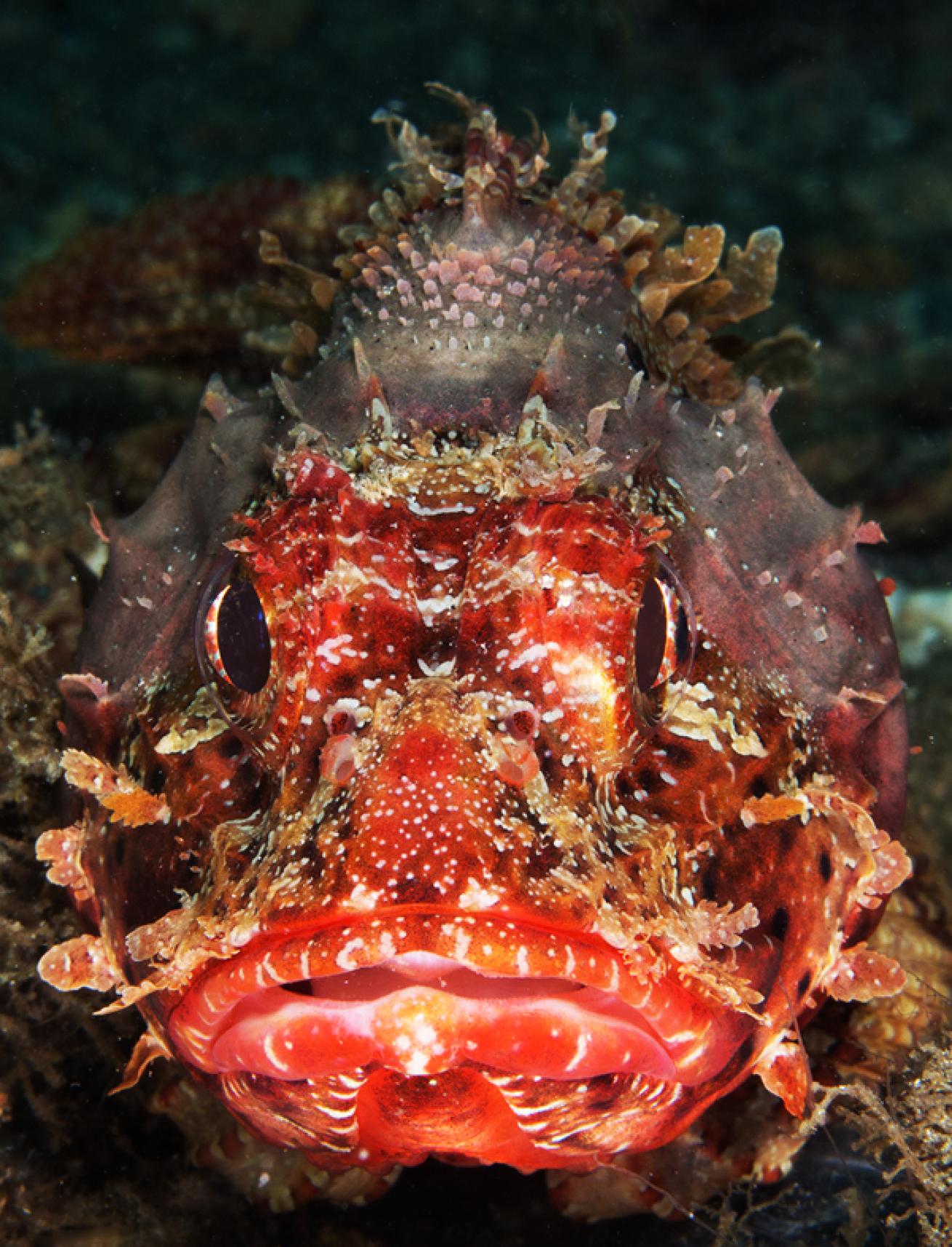
Jacky Jongenelen
This is a scorpionfish from the Scorpaenidae family, a species of marine fish that contains some othe most poisonous fish in the world, including the deadly rockfish.
Location: Blue Heron Bridge, Florida
Category: Macro
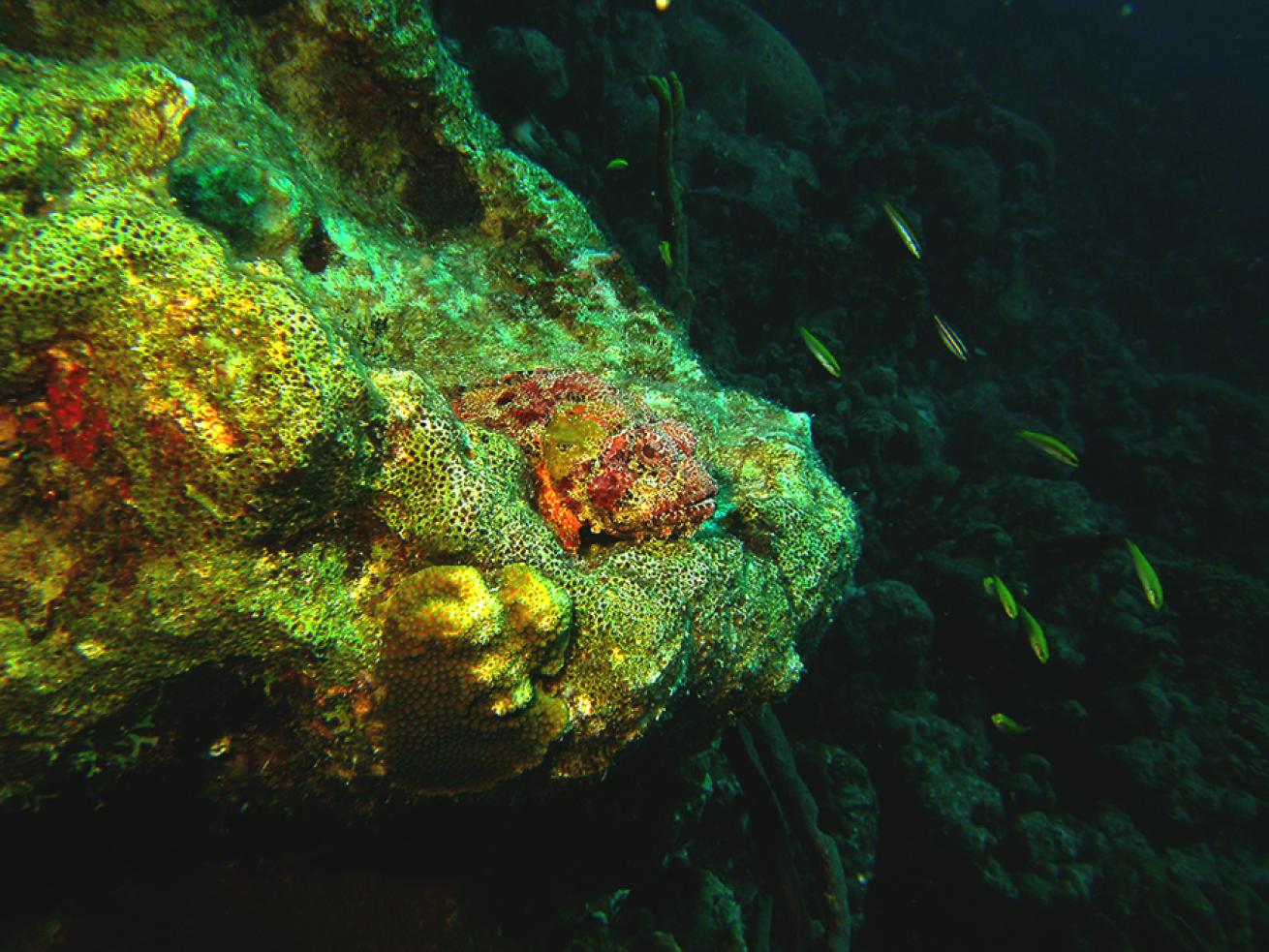
Tacey Griffin
The body of the scorpionfish is often covered in feathery fins that allow it to camouflage itself into the rocky, irregular textures of the surrounding coral.
Location: Bonaire
Category: Behavior
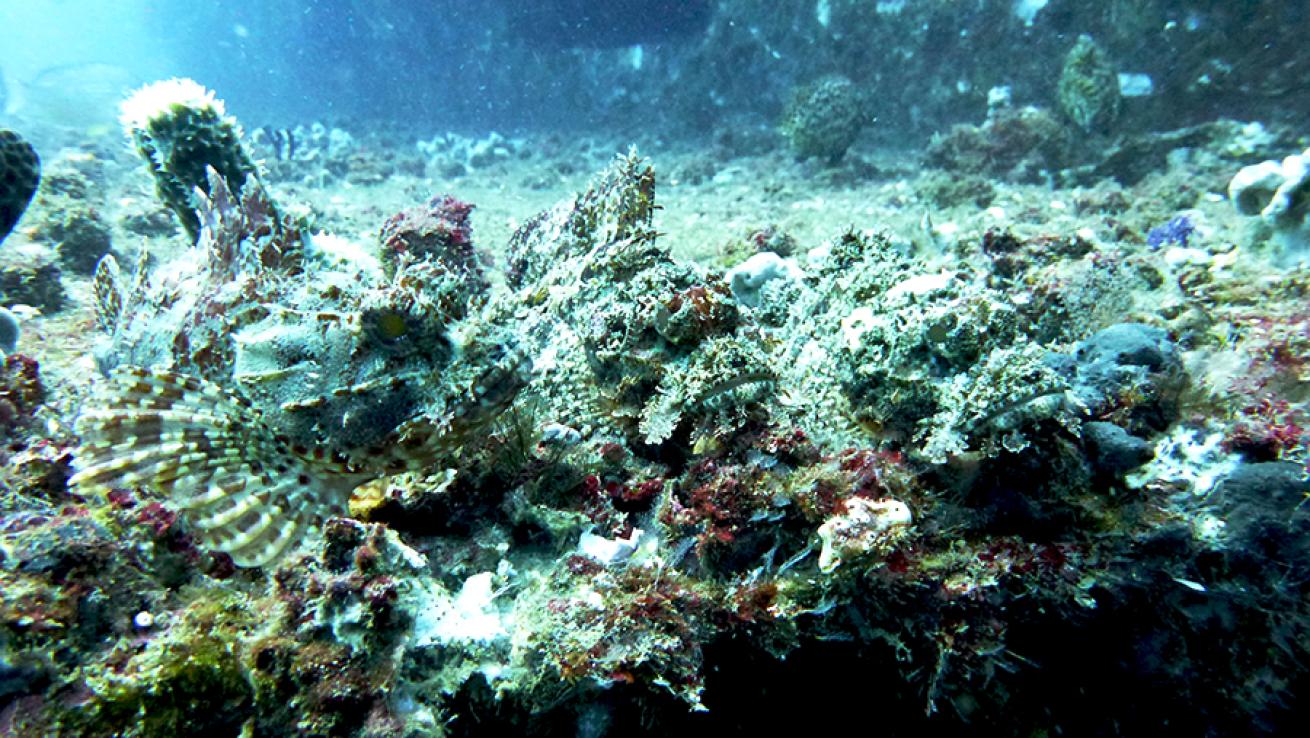
David Ennew
On the HMAS Brisbane on Queenslands Sunshine Coast, three scorpion fish lie waiting in camouflage. As you can see, they are almost undetectable. The colors and markings of the scorpionfish allow it to blend in with its environment to the point of being virtually invisible. A true master of disguise trio.
Location: HMAS Brisbane/Mooloolaba Sunshine Coast, Queensland, Australia
Category: Behavior
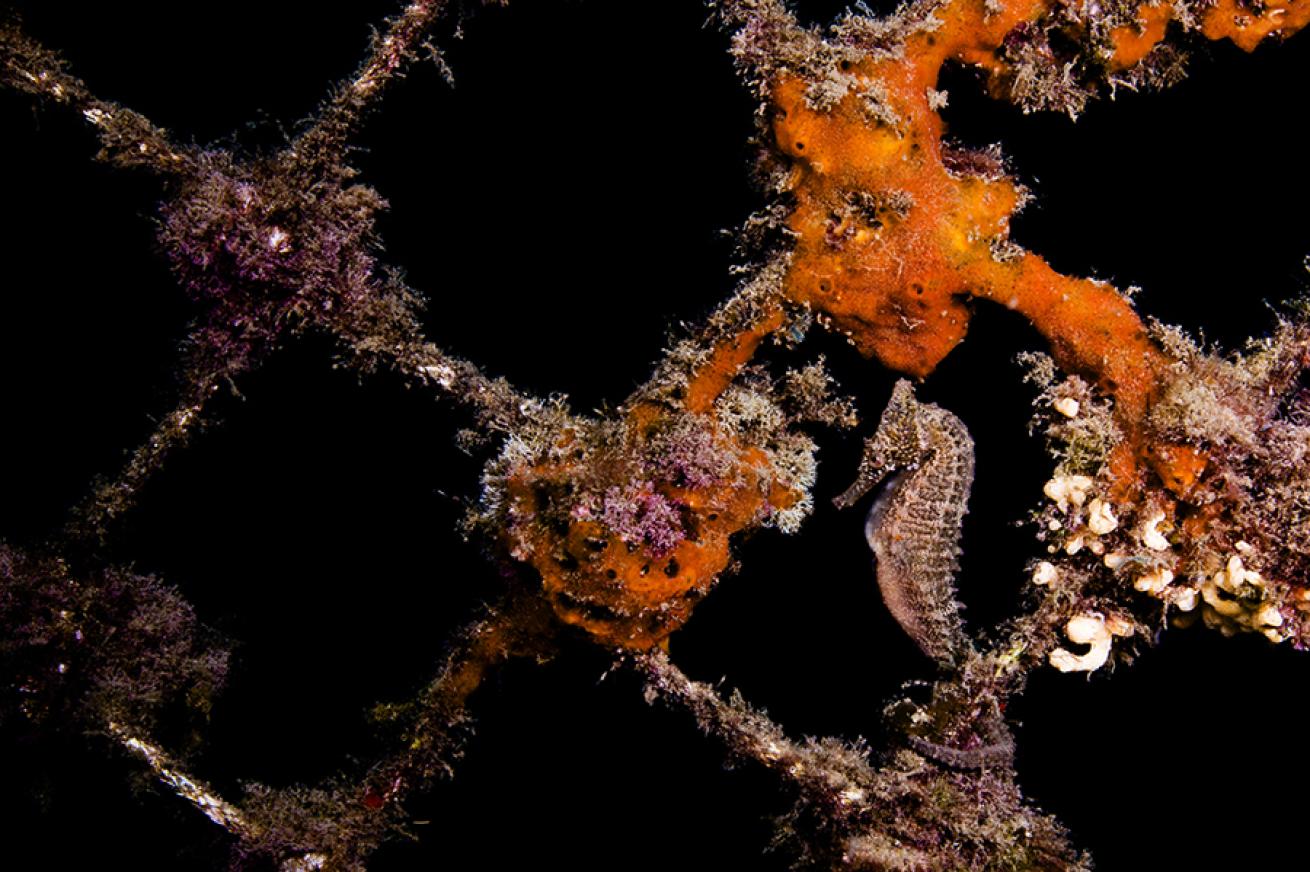
Michael Gallagher
Here is Hippocampus whitei aka white's seahorse taking shelter on a shark net. These creatures have an amazing ability to adapt to and blending with the artificial presence of man.
Location: Manly Harbour Beach, Sydney, NSW, Australia
Category: Wide Angle
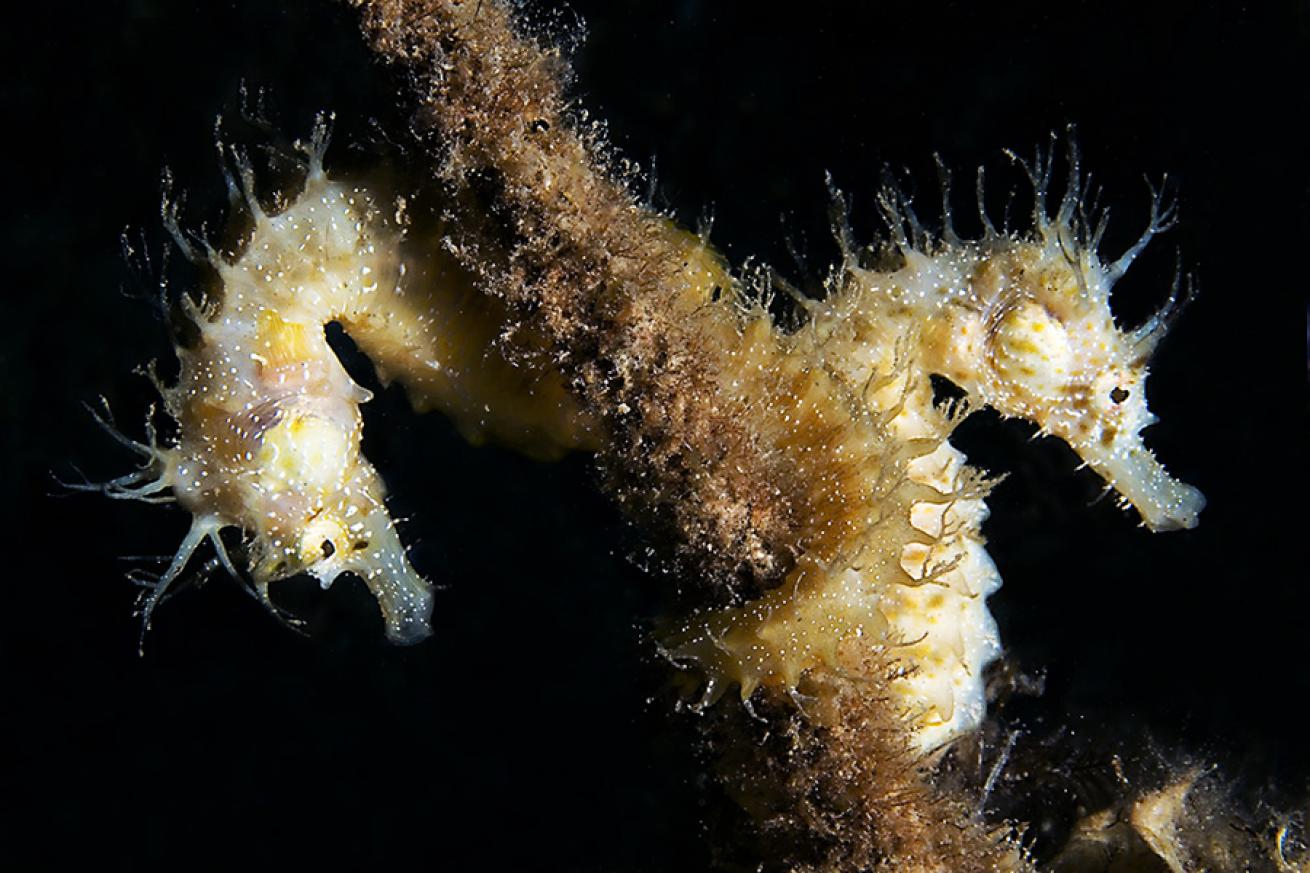
Maurizio Pasi
This is a couple of Hippocampus moluccensis or moluccan seahorses. Often found in pairs on the sandy and muddy bottoms of shallow protected bays, they sometimes wrap their tails around each other to better blend in with the sea floor.
Location: Capo Noli, Italy
Category: Behavior
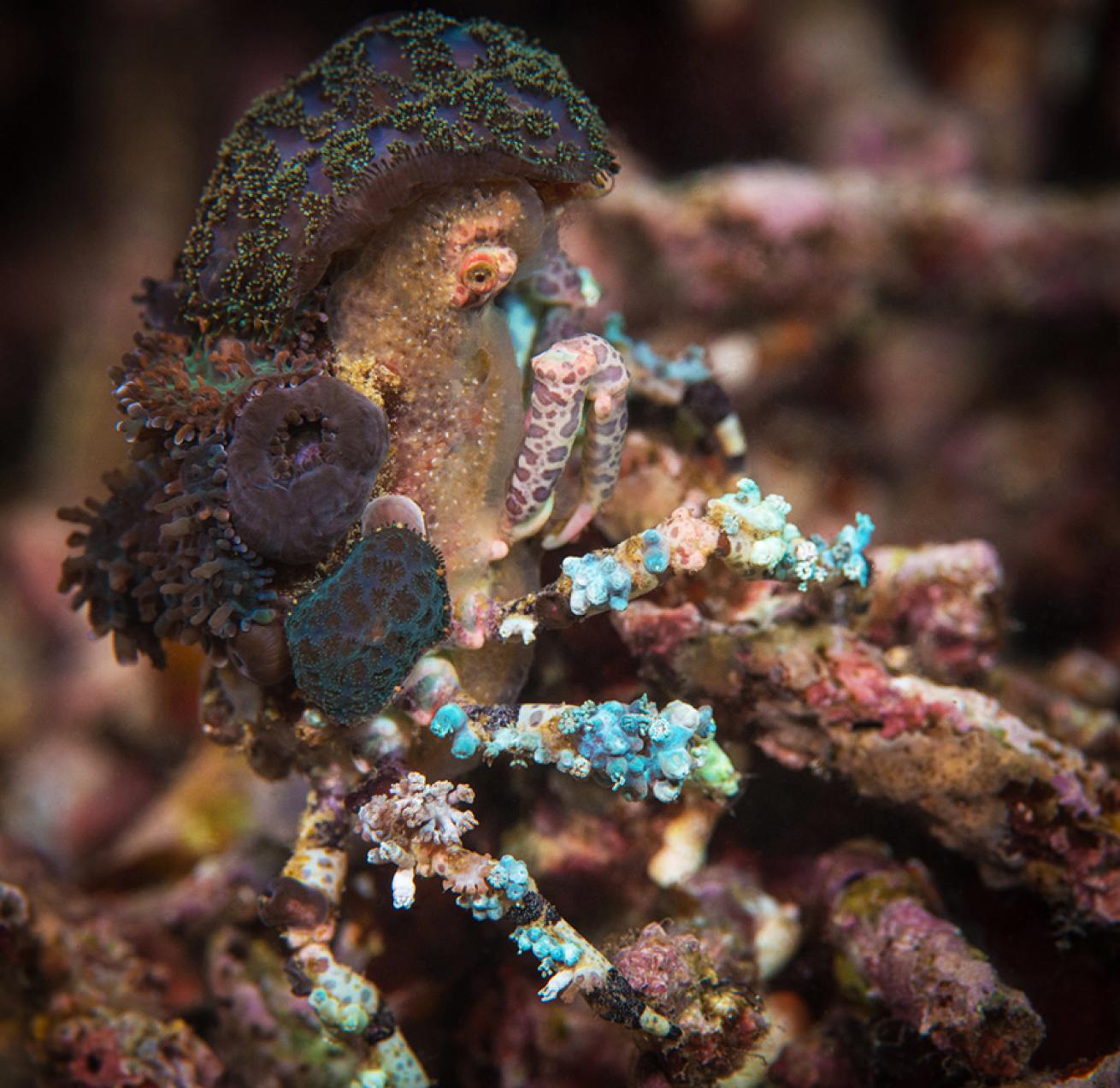
Jeff LaFrenz
A crab blends into the varying hues and textures of its coral surroundings, making it much more difficult for it to be spotted by predators.
Location: Komodo, Indonesia
Category: Macro
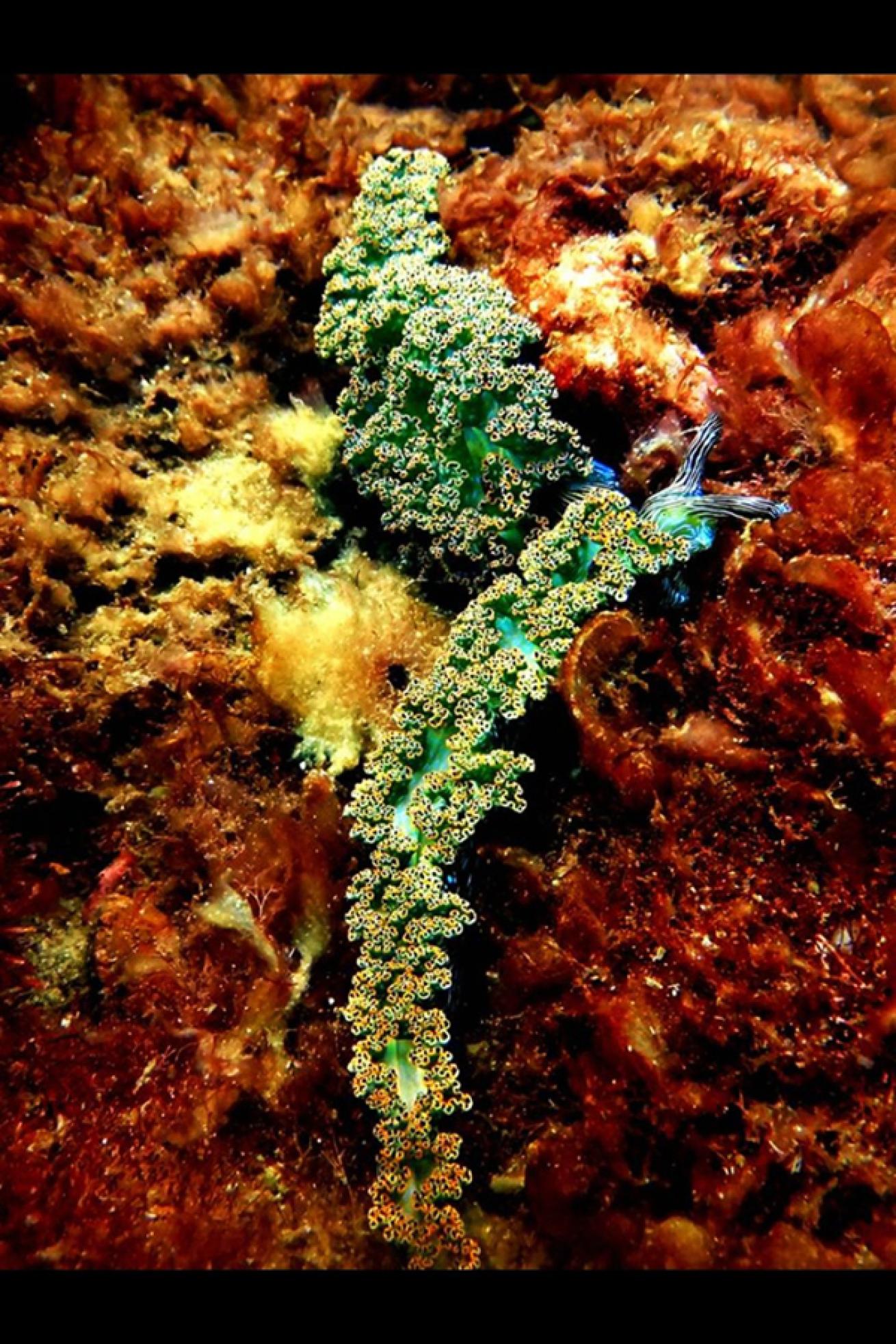
Mirko De Luca
Here are a couple of nudibranchs camouflaged by their exotic designs and bright colors to blend in with their colorful reef environment. Nudibranchs derive their coloring from the food they ingest, helping in adapting and enhancing their camouflage.
Location: El Pelado, Ecuador
Category: Macro
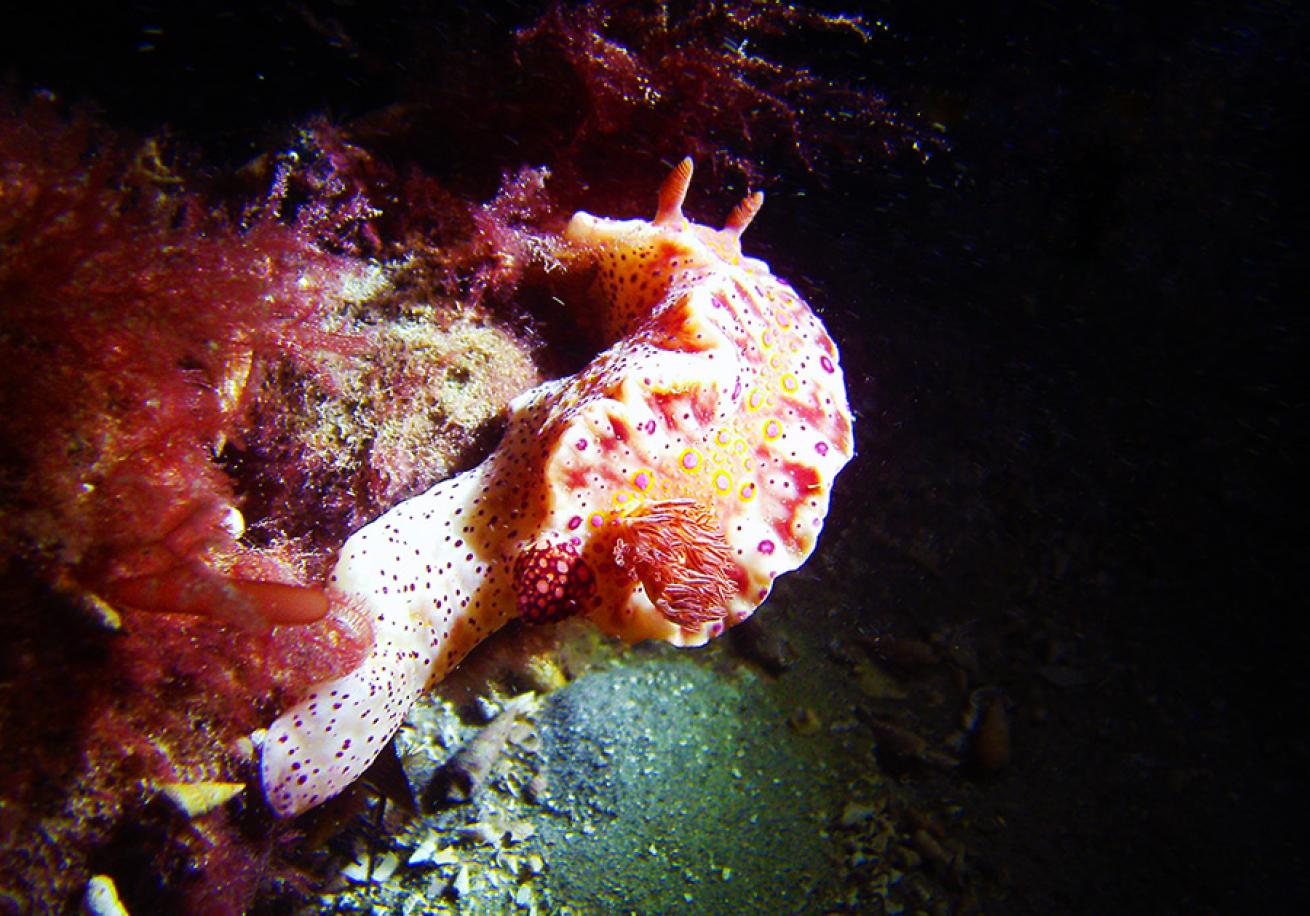
Willeka Cox
A nocturnal nudibranch blends in with its surroundings. Some species of carnivorous nudibranchs retain the foul-tasting poisons of some of their prey, like anemones, in order to secrete them later as a defense against predators.
Location: Blairgowrie Yacht Squadron/Melbourne, Australia
Category: Macro
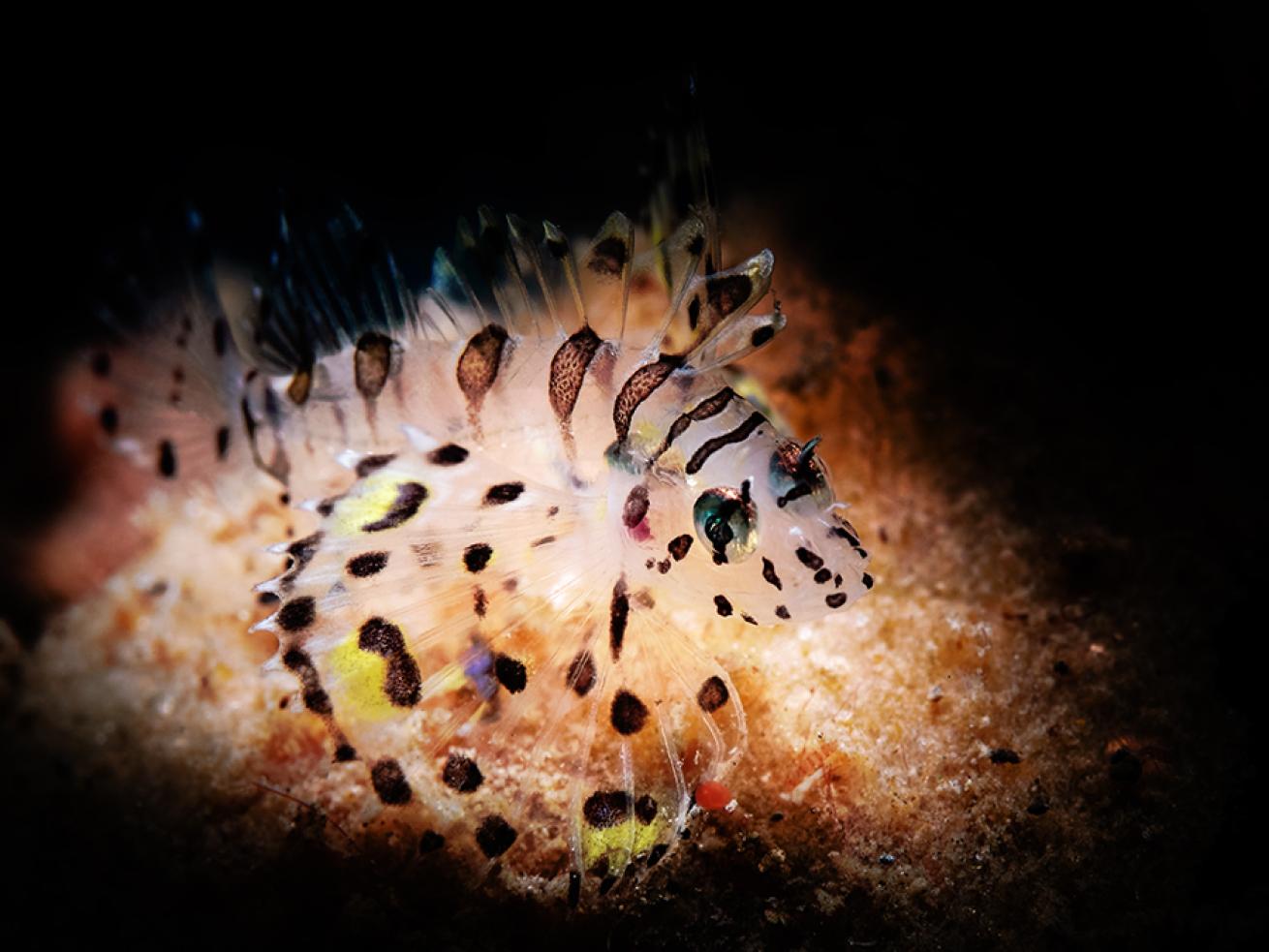
Lynn Wu
Juvenile lionfish have very little distinctive coloring and appear mainly translucent, helping them blend in with their surroundings better in order to survive to maturity.
Location: Bali, Indonesia
Category: Macro
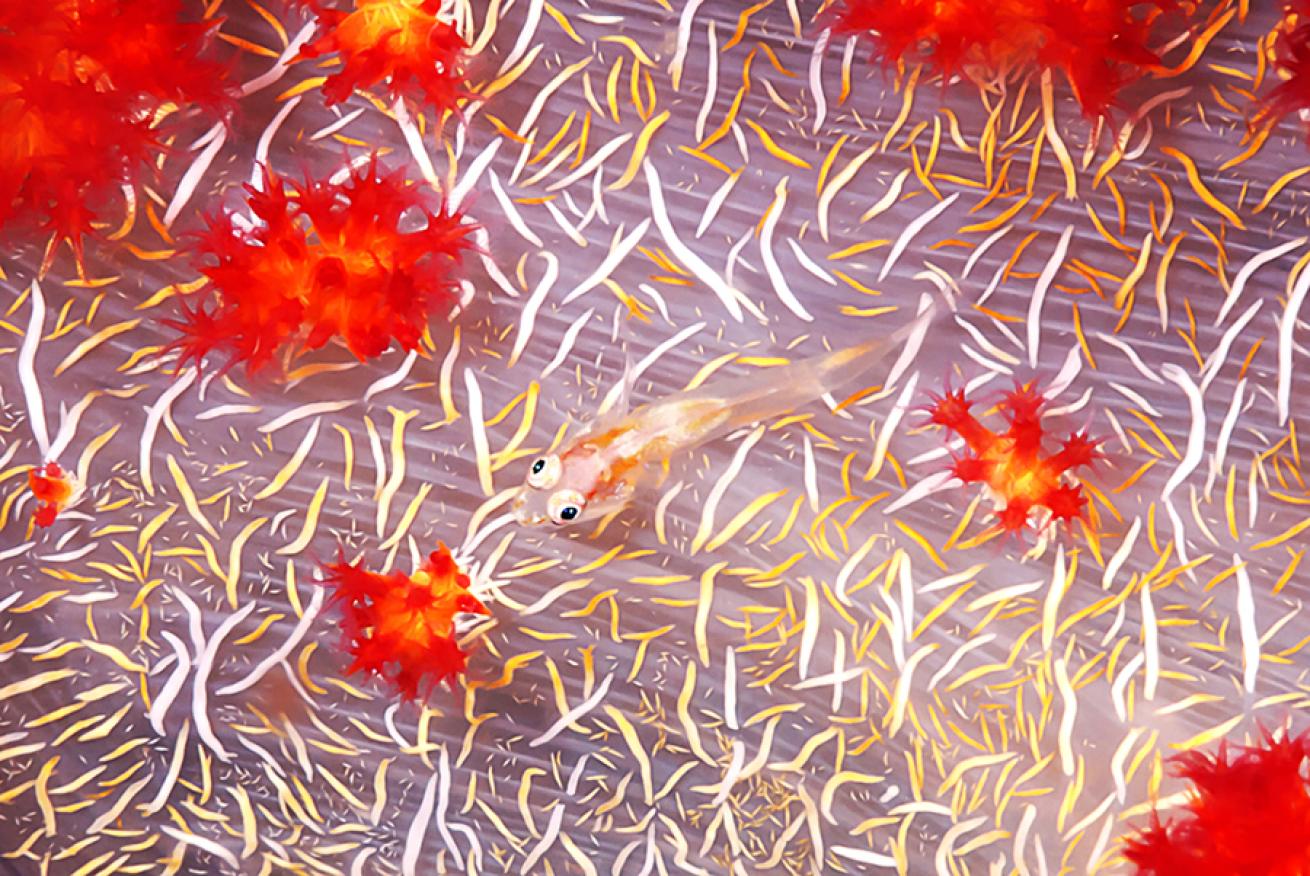
Steffen Binke
A translucent goby swimming across his soft coral home with perfectly matching colors. This blending adaptability aids this little fella in camouflaging and surviving within its environment against all odds.
Location: Papua New Guinea/Loloata
Category: Macro

